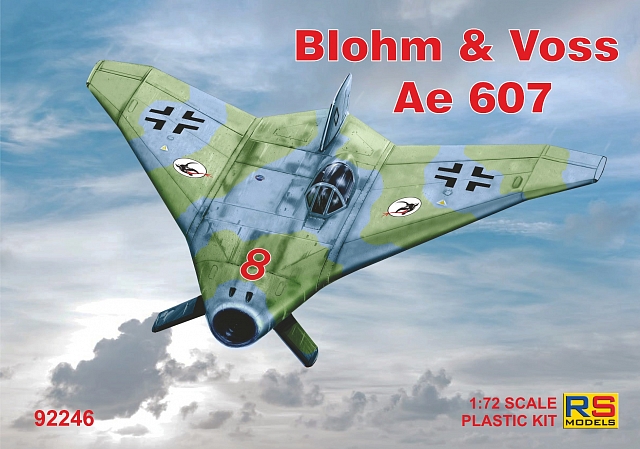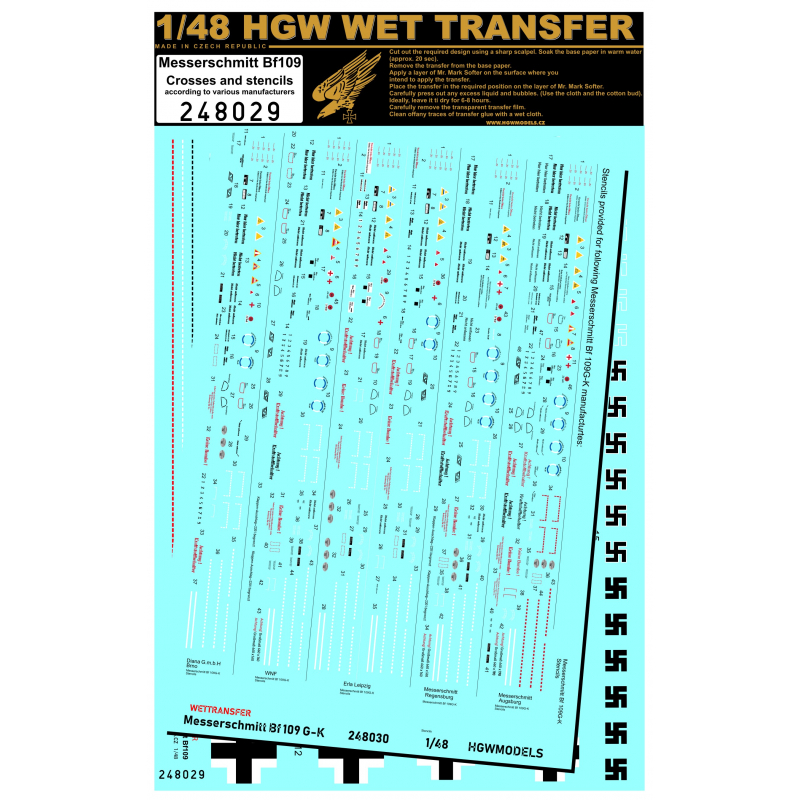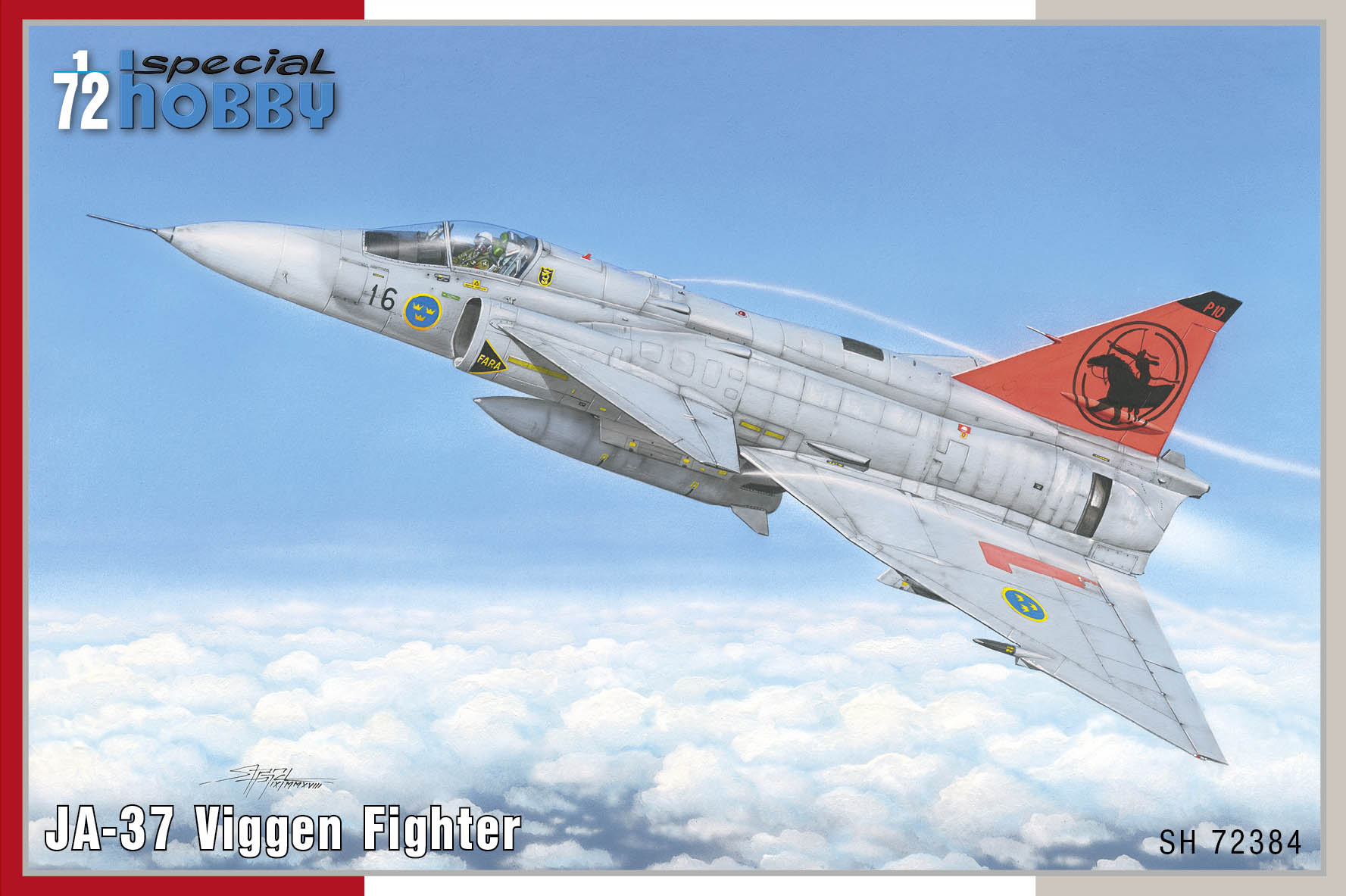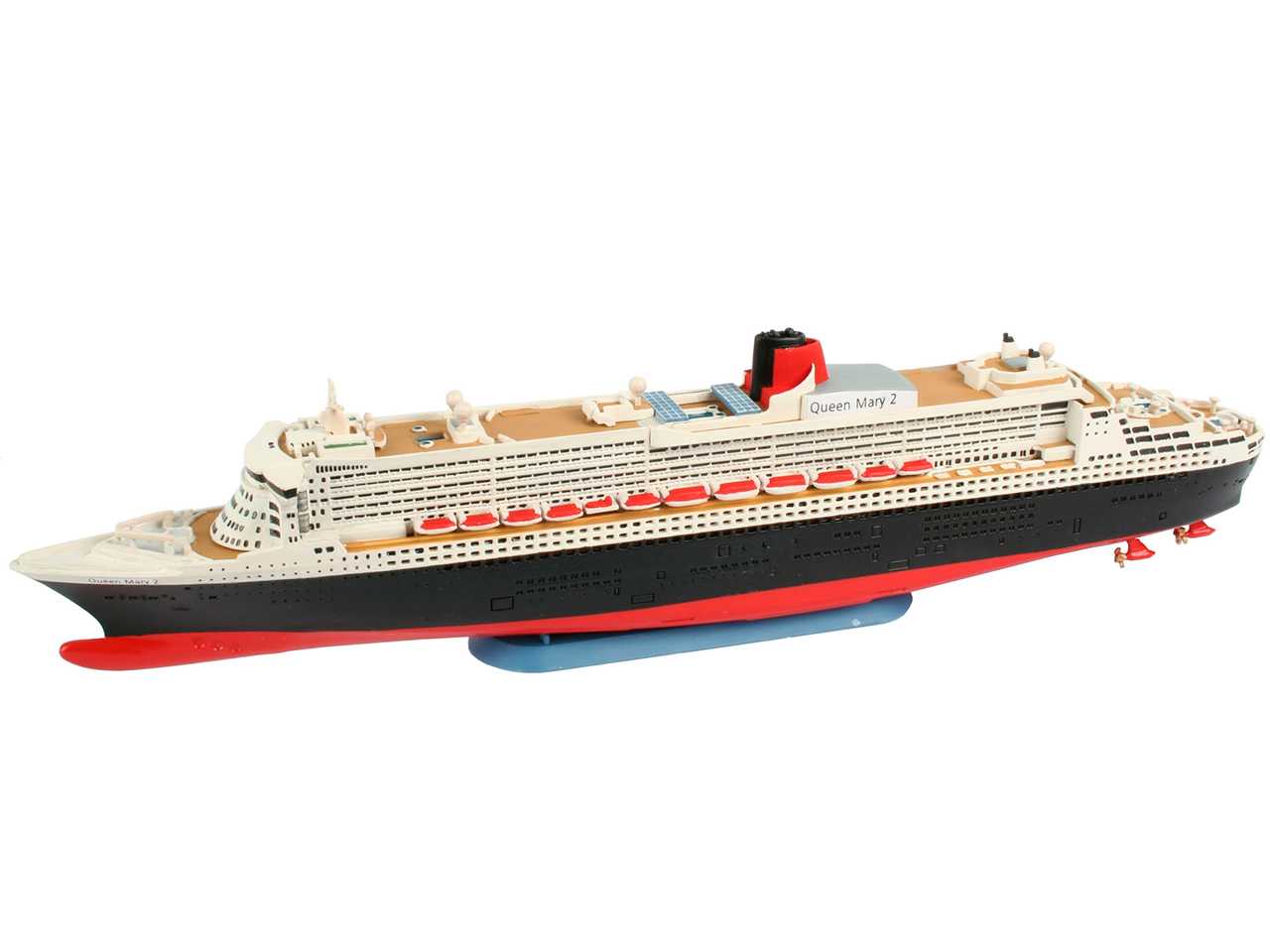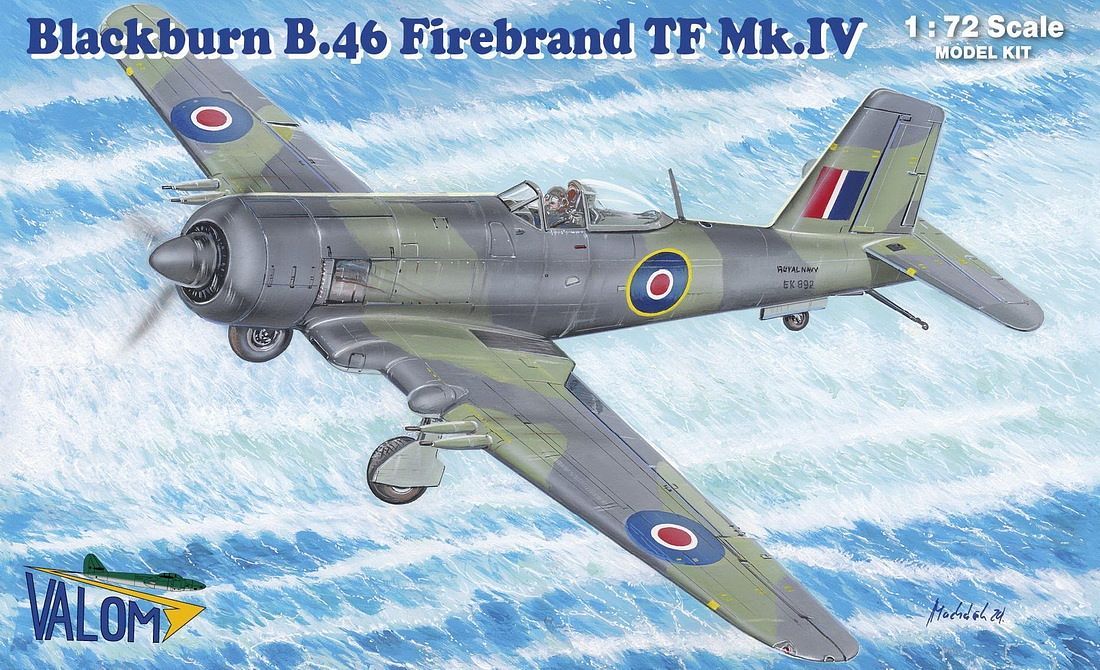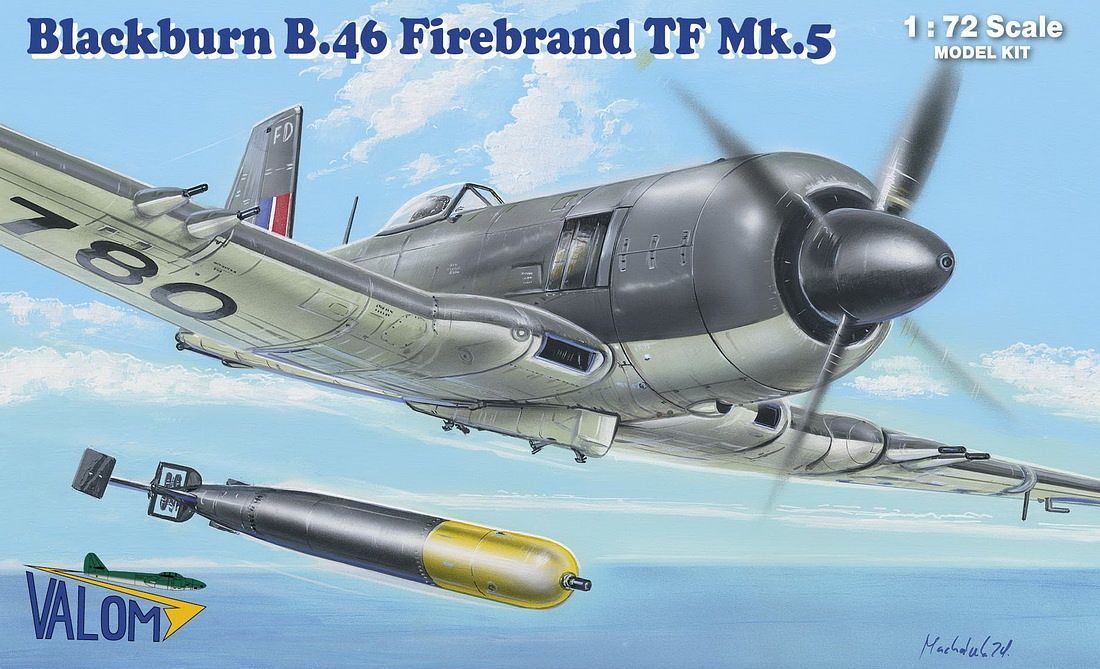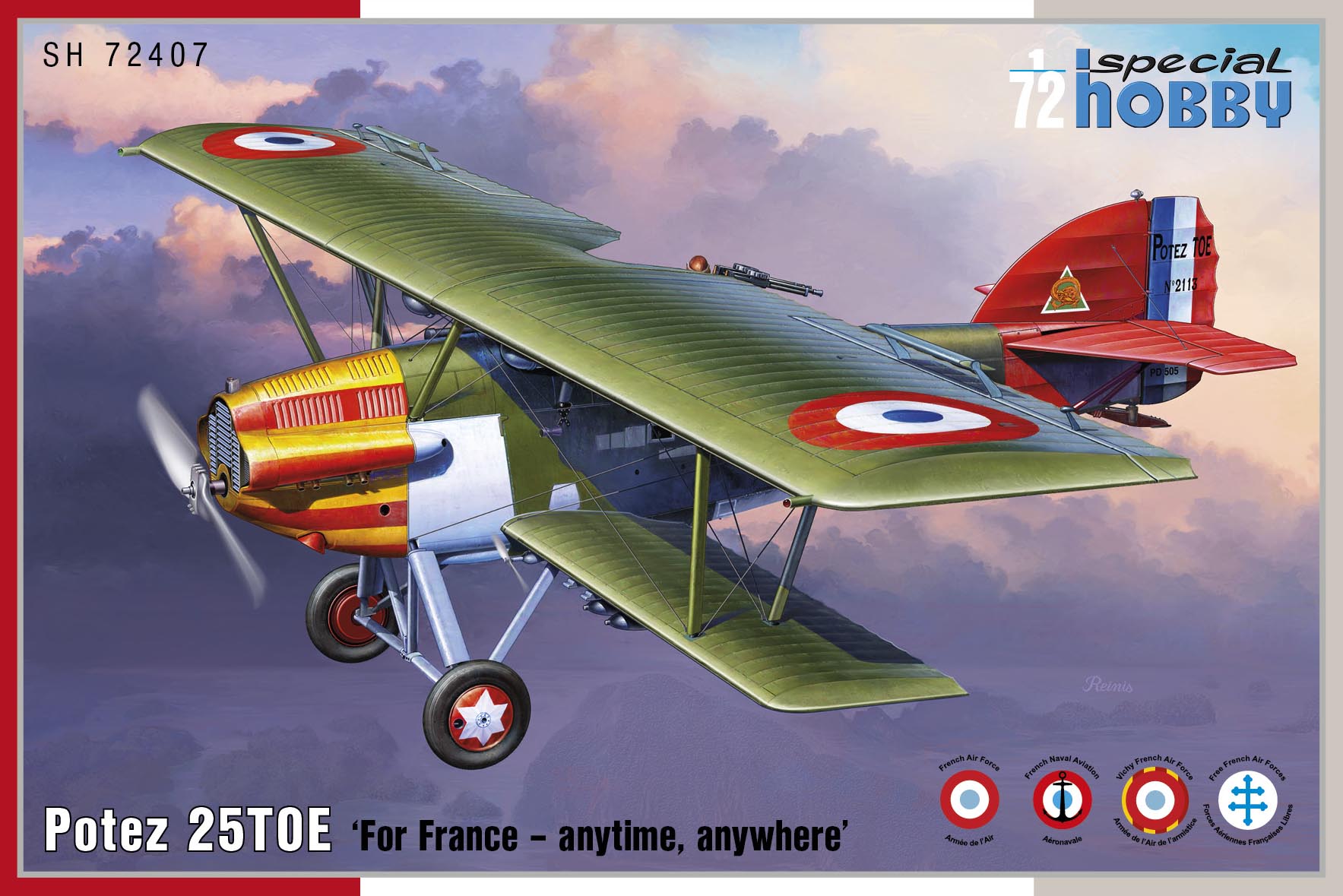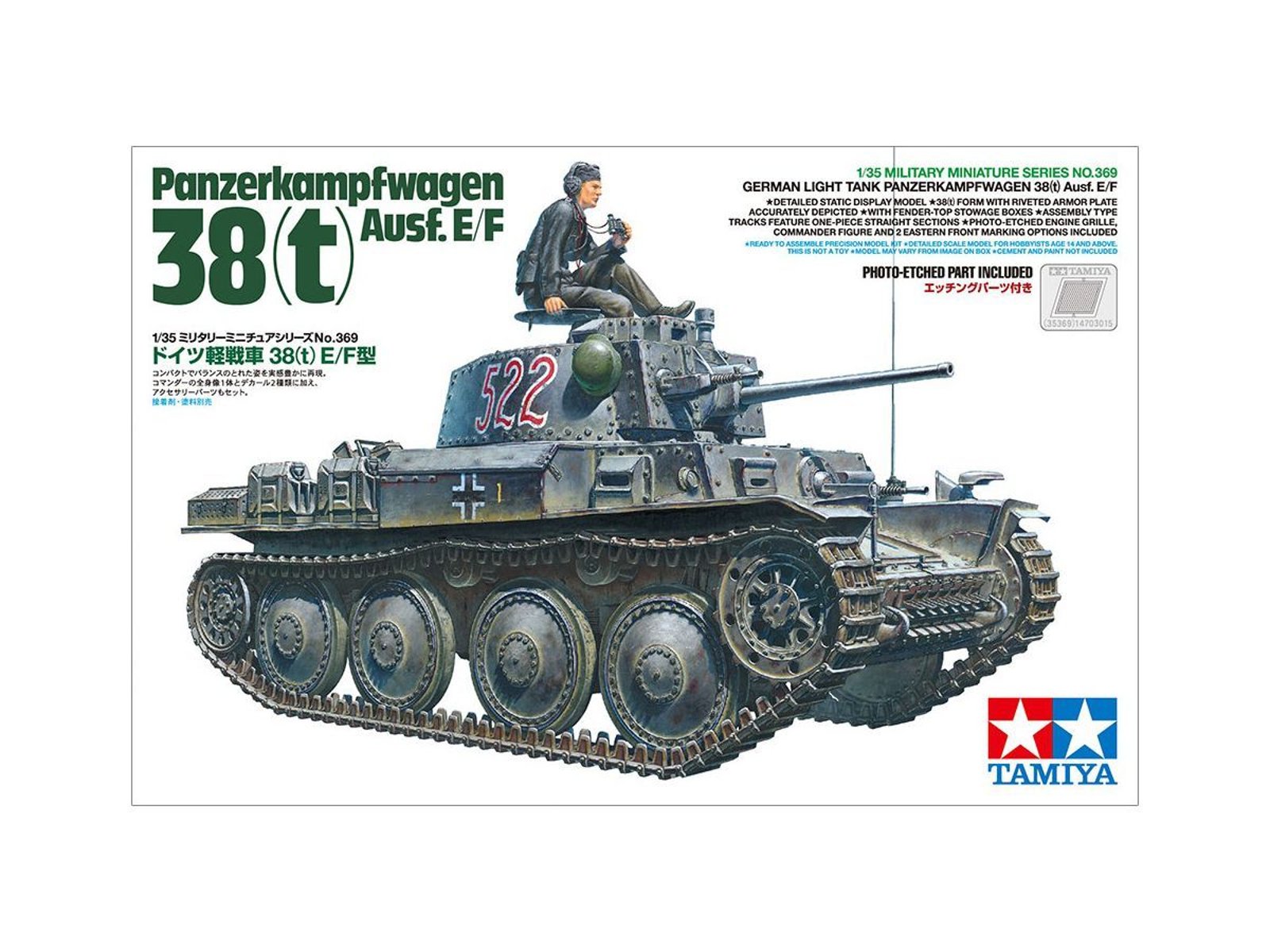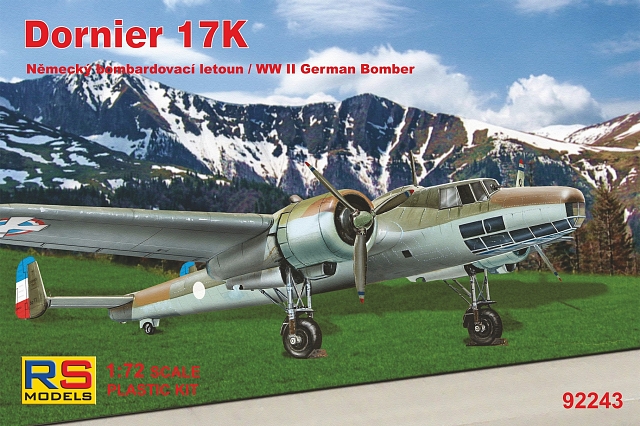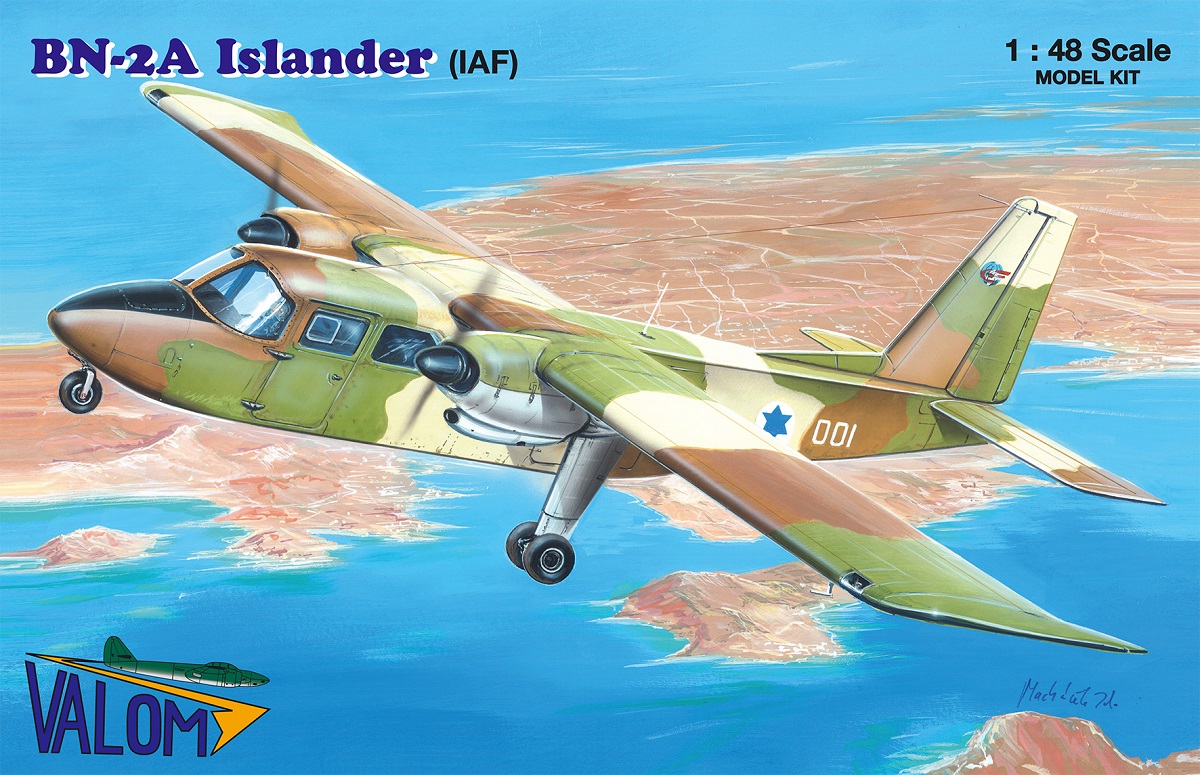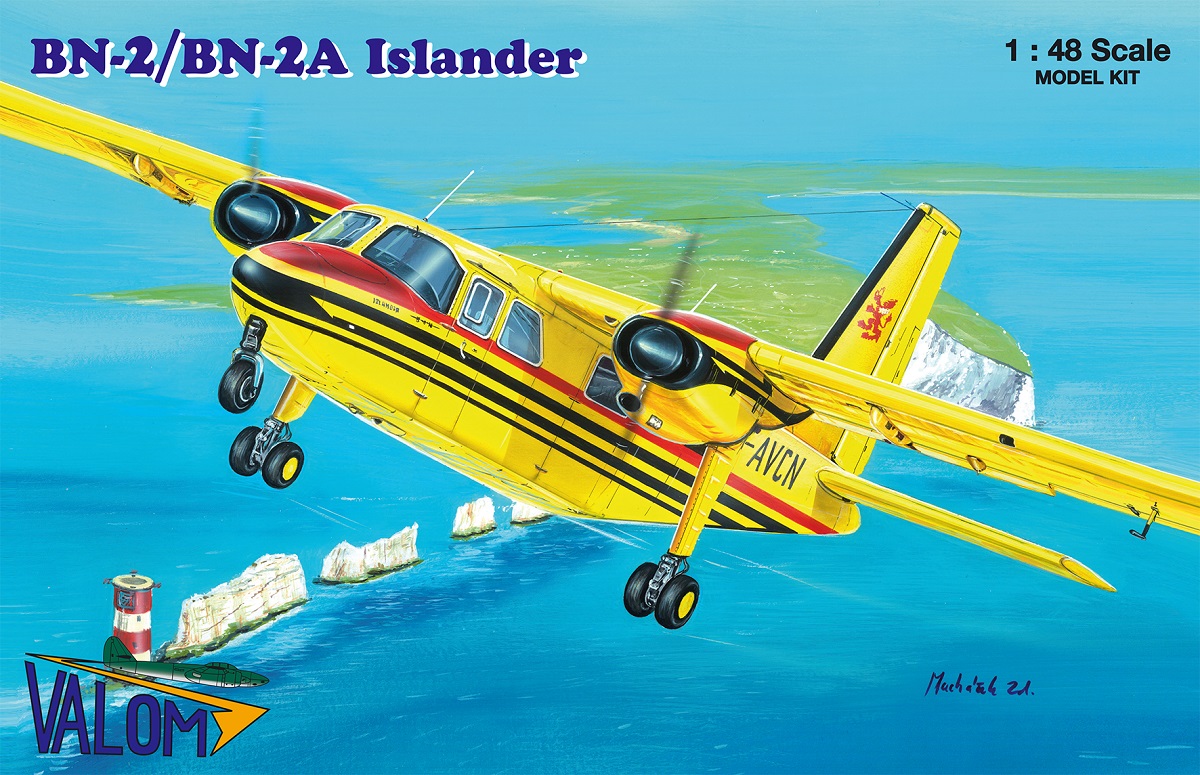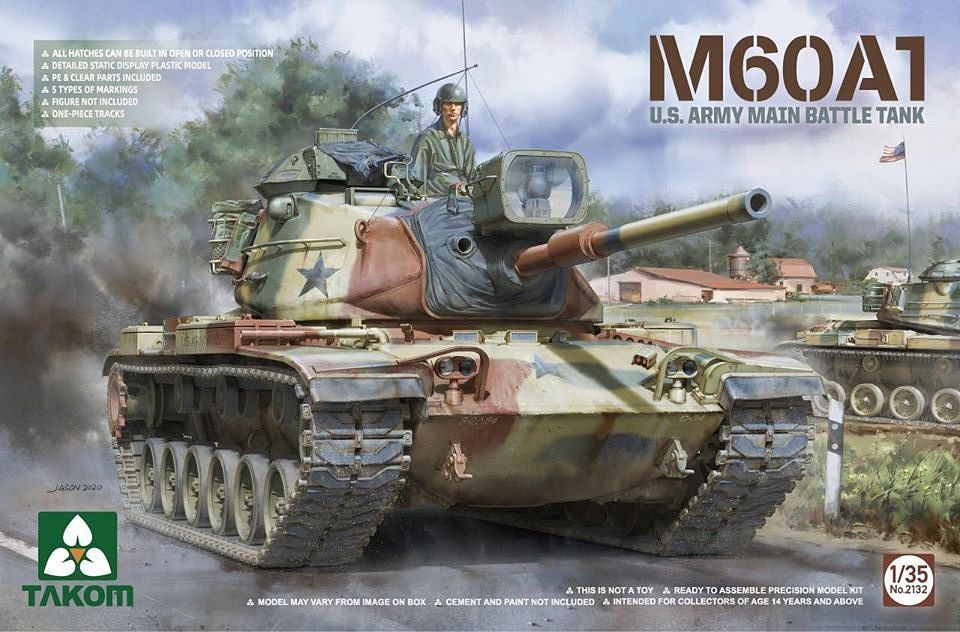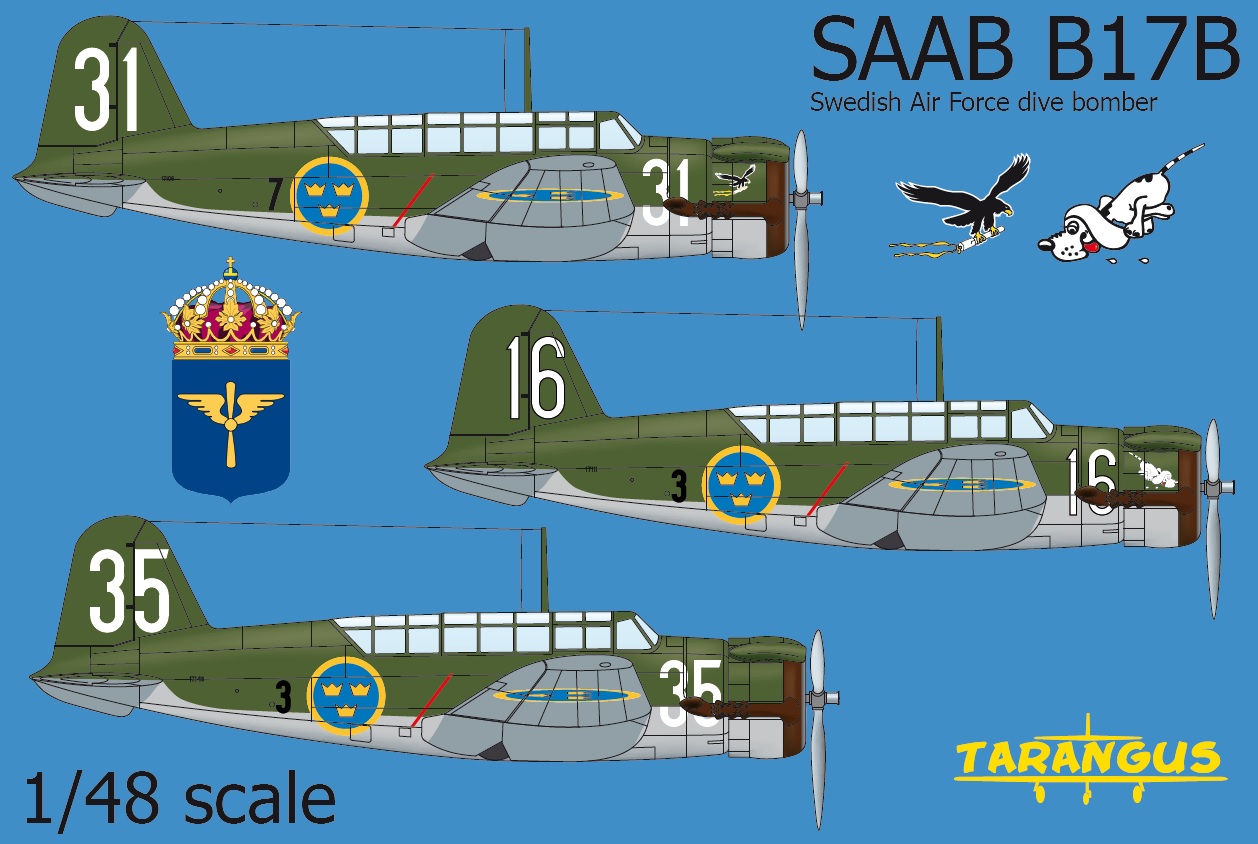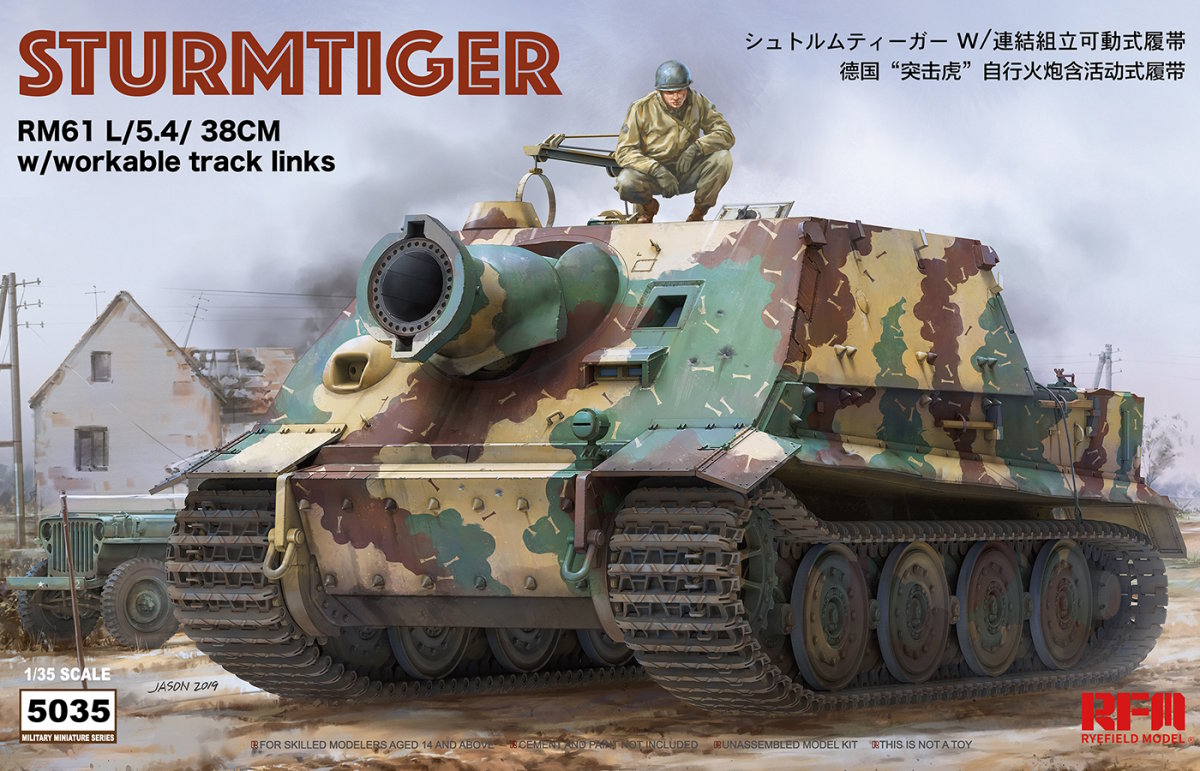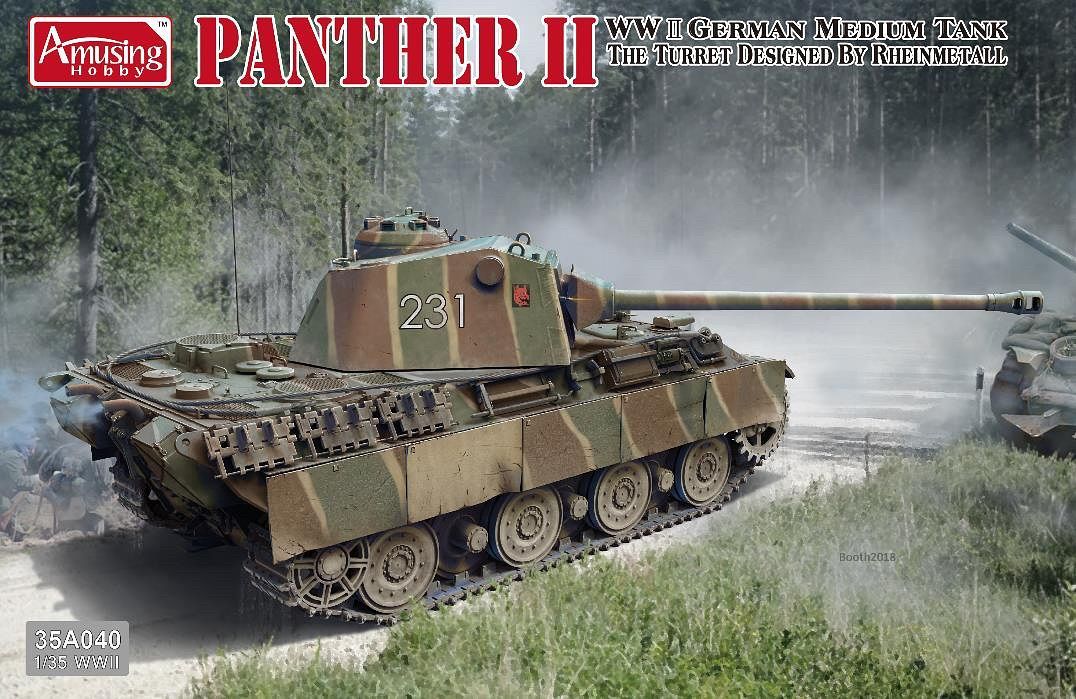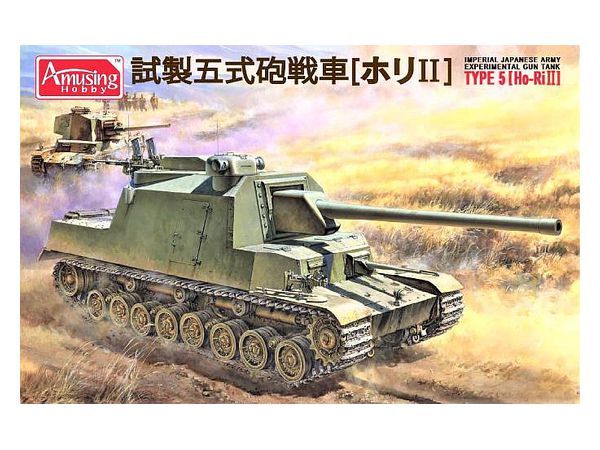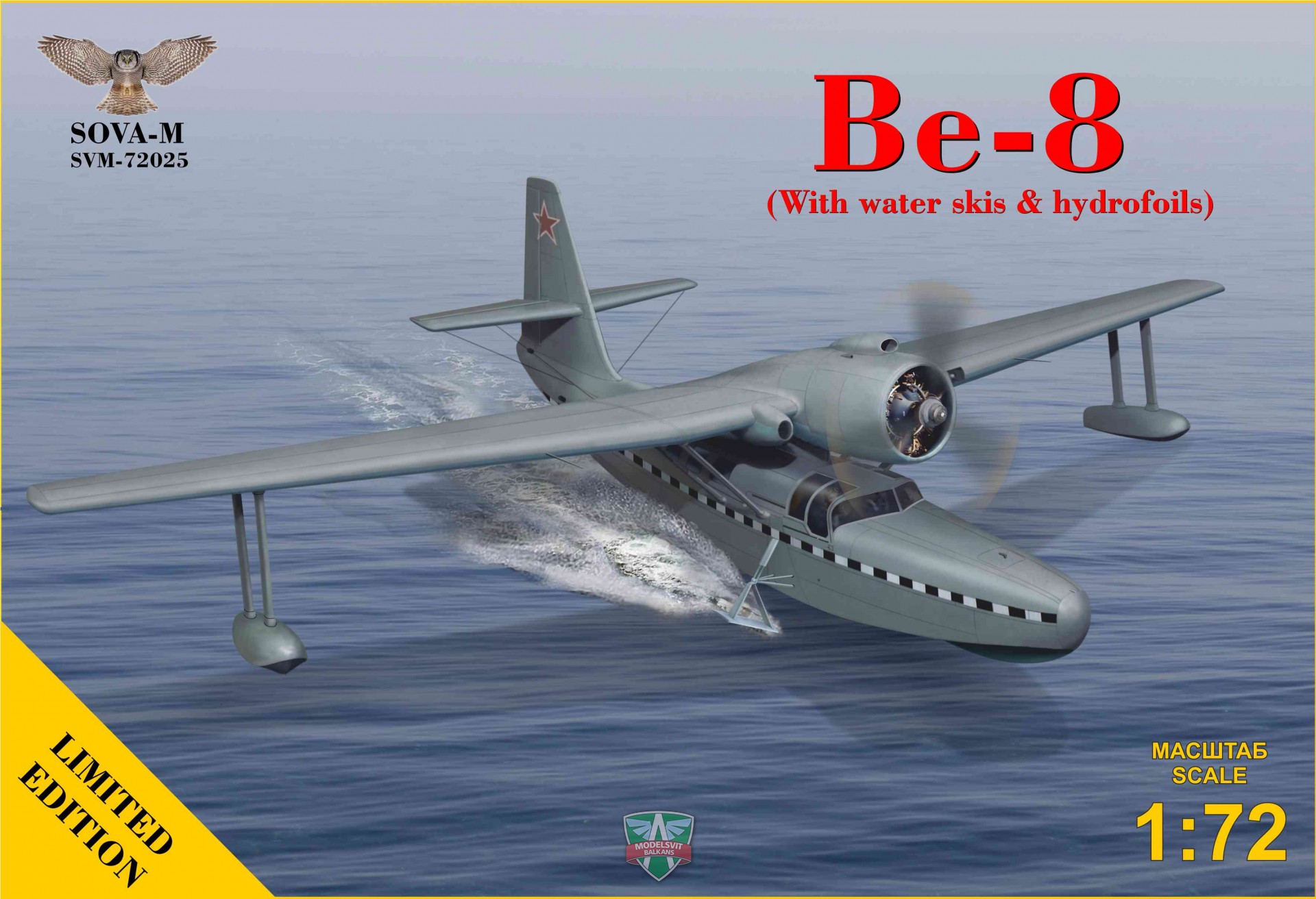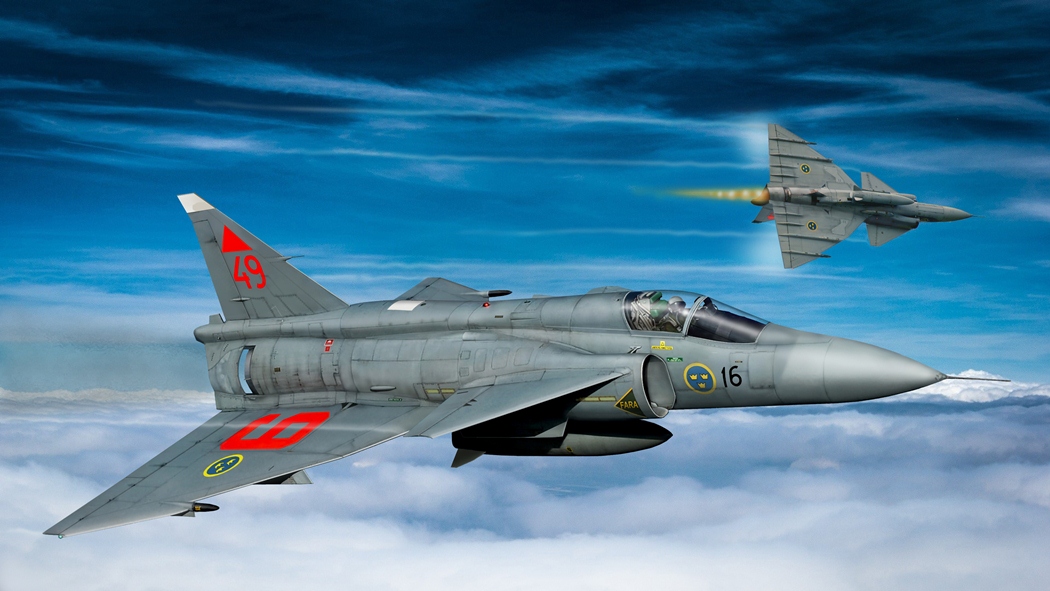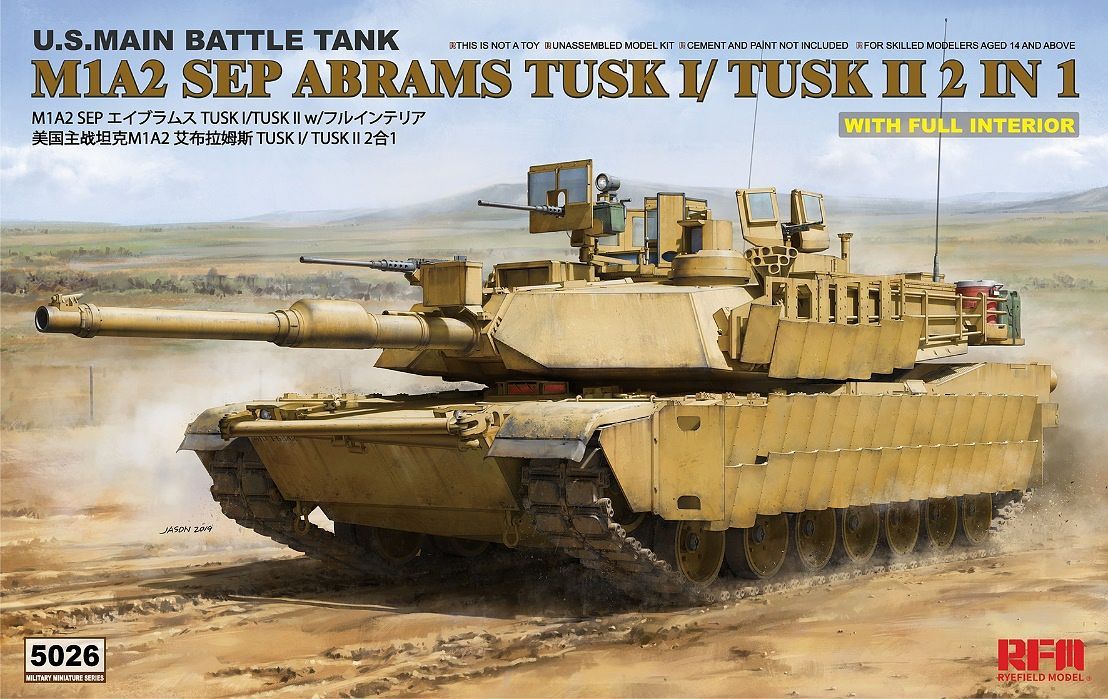Modely
Celkem 143 produktů
Plastikový model letadla 1/72 Blohm and Voss Ae 607 4 decal v. for Luftwaffe, Great Britain. Early in 1945, a Blohm & Voss (B&V) aircraft designer called Thieme began work on Drawing Number Ae 607, within the standard drawing numbering system at B&V. His design for a jet fighter was radically different from anything that B&V had done before. A flying wing, it approximated to a 45° delta planform. Reports of its existence were not confirmed until 2017, when the drawing was published. No Project number is recorded for the design and its intended status is unknown.[
Plastikový model letadla 1/48 Reggiane Re 2000 I. Serie. Just before the outbreak of WW2, the Reggiane Re 2000 took part in the competition for the standard fighter which was to serve with the Italian air force. Even though the type offered quite high performance, it eventually did not win, so the most of the production was offered for export. The Regia Aeronautica, however, decided to give the type a try and deployed it mainly in the dangerous operations against Malta. The model kit contains four styrene sprues and one with clear parts. The wing sprue has its origins in the Classic Airframes kit while all the other components are brand new, the small ones being produced from metal moulds. Italian WW2 fighter aeroplane three eye-catching marking options bearing the Italian mottle camouflage pattern we also offer separate resin sets and pre-cut masks
Plastikový model letadla 1/48 Reggiane Re 2000 I. Serie. Just before the outbreak of WW2, the Reggiane Re 2000 took part in the competition for the standard fighter which was to serve with the Italian air force. Even though the type offered quite high performance, it eventually did not win, so the most of the production was offered for export. The Regia Aeronautica, however, decided to give the type a try and deployed it mainly in the dangerous operations against Malta. The model kit contains four styrene sprues and one with clear parts. The wing sprue has its origins in the Classic Airframes kit while all the other components are brand new, the small ones being produced from metal moulds. Italian WW2 fighter aeroplane three eye-catching marking options bearing the Italian mottle camouflage pattern we also offer separate resin sets and pre-cut masks
1/48 Messerschmitt Bf109 Crosses + Stencils - Wet Transfers - various manufacturers. Crosses and stencils for Messerschmitt Bf109 in 1/48 scale. Wet transfer technology means that decal doesn't leave any signs of varnish or typical film after its application, so only text or symbols stay attached to the surface. The biggest issue relating to using ordinary decals is the varnish which creates a glossy film around the decal. It is quite hard to work with classic decals the way to make this film invisible and it is impossible to reach a good result in case of metallic surfaces. OK, there are dry transfers on the market but work with them is also quite uncomfortable, it is hard to place them correctly and a modeler has the one chance only. HGW's wet transfers are similar to ordinary decals. It is possible to move them during the attaching process and find the best position. Then just push the water from below the transfer, let it dry few hours, remove the transfer foil and work is done. Only text or symbol stays attached to the surface. Instructions: 1. Cut the required part.2. Soak in hot water and wait till the decal loose its base-paper.3. Apply as regular decal.4. Push the water from below the decal.5. Let it dry for 2-3 hours.6. Remove the transfer foil and clean the glue stains with water.
1/48 Messerschmitt Bf109 Crosses + Stencils - Wet Transfers - various manufacturers. Crosses and stencils for Messerschmitt Bf109 in 1/48 scale. Wet transfer technology means that decal doesn't leave any signs of varnish or typical film after its application, so only text or symbols stay attached to the surface. The biggest issue relating to using ordinary decals is the varnish which creates a glossy film around the decal. It is quite hard to work with classic decals the way to make this film invisible and it is impossible to reach a good result in case of metallic surfaces. OK, there are dry transfers on the market but work with them is also quite uncomfortable, it is hard to place them correctly and a modeler has the one chance only. HGW's wet transfers are similar to ordinary decals. It is possible to move them during the attaching process and find the best position. Then just push the water from below the transfer, let it dry few hours, remove the transfer foil and work is done. Only text or symbol stays attached to the surface. Instructions: 1. Cut the required part.2. Soak in hot water and wait till the decal loose its base-paper.3. Apply as regular decal.4. Push the water from below the decal.5. Let it dry for 2-3 hours.6. Remove the transfer foil and clean the glue stains with water.
1/48 Tempest Mk.V Series 1 . Stavebnice britského druhoválečného stíhacího letounu Tempest Mk.V Series 1 v měřítku 1/48, edice Weekend. Ze stavebnice je možné si postavit stroje účastnící se operace Overlord. plastové díly: Eduard počet kamuflážních schémat: 2 obtisky: Eduard leptané díly: ne maska: ne Kamuflážní schémata: A) JN751, Wg Cdr Roland P. Beamont, 150. Wing, Newchurch, Velká Británie, červen 1944 V květnu 1944 byl 150. Wing uznán operačním, Tempesty byla vyzbrojena pouze 3. a 486. squadrona, zatímco 56. squadrona si na nové Tempesty musela počkat do června 1944 a dočasně používala Spitfiry Mk.IX. Úkolem Tempestů 150. Wingu byly v době invaze útoky na pozemní síly nepřítele, od poloviny června přibyla ochrana jihu Anglie proti střelám V-1. Na konci září 1944 se celá jednotka pod Beamontovým vedením přesunula na území osvobozené Evropy. Dne 12. října dostal Beamontův stroj zasažen flakem do chladiče, pilot musel přistát na nepřátelském území a zbytek války strávil v zajetí. Během 2. světové války dosáhl devíti sestřelů a byl vyznamenán DFC & Bar a DSO & Bar. Po válce Beamont pracoval jako zkušební pilot a létal mimo jiné na strojích Meteor, Vampire, Canbera, Lightning a TSR-2. V srpnu 1979 odešel do důchodu. Zemřel 19. listopadu 2001. Kamufláž Beamontova stroje byla v předvečer invaze do Evropy doplněna o výrazný marking v podobě bílých a černých pruhů o šíři 18 palců na zadní části trupu a křídle. B) JN765, 3.squadrona, Newchurch, Velká Británie, červen 1944 3. squadrona, jež byla založena v roce 1912, byla na počátku 2. světové války vyzbrojena stroji Hawker Hurricane, s nimiž v rámci Britského expedičního sboru bojovala nad Belgií a Francií. Po návratu do Velké Británie následovalo hlídkování nad námořní základnou Royal Navy ve Scapa Flow, od dubna 1941 působila na jihu Anglie jako noční stíhací jednotka. V červnu 1943 došlo k jejímu přezbrojení na stroje Hawker Typhoon, v únoru 1944 byla vyzbrojena stroji Hawker Tempest. S nimi se zúčastnila příprav na invazi do Evropy, ochrany jižní Anglie proti střelám V-1, přesunu do Evropy, kde podporovala postupující jednotky až do konce války. V Německu zůstala v rámci BAFO (British Air Forces of Occupation) až do května 1999. Na přelomu tisíciletí se podílela na bojových akcích v Kosovu, Sierra Leoně, Iráku a v roce 2004 v Afghánistánu. V březnu 2006 obdržela nové Eurofightery Typhoon. V květnu 1944 bylo 3. squadroně změněno kódové označení z předchozího QO na JF, jež následně používala až do roku 1946. Označení tzv. invazními pruhy dostal v předvečer vylodění v Normandii také stroj JN765. Pozemní personál natřel černou barvou navíc také spodní část krytů hlavního podvozku. Úvodem: Příběh Tempestu není vlastně ničím jiným, než záměrem vyřešit nedostatky, které zabránily Hawkeru Typhoon uspět v roli stíhacího letounu. Hlavním problémem Typhoonu bylo jeho tlusté křídlo s profilem NACA 22, které sice poskytovalo spoustu vnitřního prostoru pro palivové nádrže a zbraně, zároveň ale s rostoucí rychlostí rychle zvyšovalo aerodynamický odpor. A tak nebylo divu, že jádrem změn vedoucích k novému stíhači bylo právě křídlo. Letoun si měl původně ponechat název Typhoon s tím, že bude označen jako Mk.II, ale záhy bylo evidentní, že výsledkem bude v podstatě nový typ, takže bylo jméno změněno na Tempest (vichřice), čímž Hawker pokračoval ve své tradici označovat své stíhací letouny “větrnými” jmény. Série změn Nové křídlo mělo u kořene o 12,7 cm nižší profil a v porovn...
1/48 Tempest Mk.V Series 1 . Stavebnice britského druhoválečného stíhacího letounu Tempest Mk.V Series 1 v měřítku 1/48, edice Weekend. Ze stavebnice je možné si postavit stroje účastnící se operace Overlord. plastové díly: Eduard počet kamuflážních schémat: 2 obtisky: Eduard leptané díly: ne maska: ne Kamuflážní schémata: A) JN751, Wg Cdr Roland P. Beamont, 150. Wing, Newchurch, Velká Británie, červen 1944 V květnu 1944 byl 150. Wing uznán operačním, Tempesty byla vyzbrojena pouze 3. a 486. squadrona, zatímco 56. squadrona si na nové Tempesty musela počkat do června 1944 a dočasně používala Spitfiry Mk.IX. Úkolem Tempestů 150. Wingu byly v době invaze útoky na pozemní síly nepřítele, od poloviny června přibyla ochrana jihu Anglie proti střelám V-1. Na konci září 1944 se celá jednotka pod Beamontovým vedením přesunula na území osvobozené Evropy. Dne 12. října dostal Beamontův stroj zasažen flakem do chladiče, pilot musel přistát na nepřátelském území a zbytek války strávil v zajetí. Během 2. světové války dosáhl devíti sestřelů a byl vyznamenán DFC & Bar a DSO & Bar. Po válce Beamont pracoval jako zkušební pilot a létal mimo jiné na strojích Meteor, Vampire, Canbera, Lightning a TSR-2. V srpnu 1979 odešel do důchodu. Zemřel 19. listopadu 2001. Kamufláž Beamontova stroje byla v předvečer invaze do Evropy doplněna o výrazný marking v podobě bílých a černých pruhů o šíři 18 palců na zadní části trupu a křídle. B) JN765, 3.squadrona, Newchurch, Velká Británie, červen 1944 3. squadrona, jež byla založena v roce 1912, byla na počátku 2. světové války vyzbrojena stroji Hawker Hurricane, s nimiž v rámci Britského expedičního sboru bojovala nad Belgií a Francií. Po návratu do Velké Británie následovalo hlídkování nad námořní základnou Royal Navy ve Scapa Flow, od dubna 1941 působila na jihu Anglie jako noční stíhací jednotka. V červnu 1943 došlo k jejímu přezbrojení na stroje Hawker Typhoon, v únoru 1944 byla vyzbrojena stroji Hawker Tempest. S nimi se zúčastnila příprav na invazi do Evropy, ochrany jižní Anglie proti střelám V-1, přesunu do Evropy, kde podporovala postupující jednotky až do konce války. V Německu zůstala v rámci BAFO (British Air Forces of Occupation) až do května 1999. Na přelomu tisíciletí se podílela na bojových akcích v Kosovu, Sierra Leoně, Iráku a v roce 2004 v Afghánistánu. V březnu 2006 obdržela nové Eurofightery Typhoon. V květnu 1944 bylo 3. squadroně změněno kódové označení z předchozího QO na JF, jež následně používala až do roku 1946. Označení tzv. invazními pruhy dostal v předvečer vylodění v Normandii také stroj JN765. Pozemní personál natřel černou barvou navíc také spodní část krytů hlavního podvozku. Úvodem: Příběh Tempestu není vlastně ničím jiným, než záměrem vyřešit nedostatky, které zabránily Hawkeru Typhoon uspět v roli stíhacího letounu. Hlavním problémem Typhoonu bylo jeho tlusté křídlo s profilem NACA 22, které sice poskytovalo spoustu vnitřního prostoru pro palivové nádrže a zbraně, zároveň ale s rostoucí rychlostí rychle zvyšovalo aerodynamický odpor. A tak nebylo divu, že jádrem změn vedoucích k novému stíhači bylo právě křídlo. Letoun si měl původně ponechat název Typhoon s tím, že bude označen jako Mk.II, ale záhy bylo evidentní, že výsledkem bude v podstatě nový typ, takže bylo jméno změněno na Tempest (vichřice), čímž Hawker pokračoval ve své tradici označovat své stíhací letouny “větrnými” jmény. Série změn Nové křídlo mělo u kořene o 12,7 cm nižší profil a v porovn...
Plastikový model letadla 1/72 JA-37 Viggen. Model of the second generation of the Viggen fighter aircraft which featured longer fuselage and more powerful engine. Content of the kit: eight parts on styrene sprues, one clear styrene sprue, full colour instruction booklet, a sheet of decals highly accurate and finely detailed model, the top notch 1/72 Viggen currently on the market decals cater for three machines one of which sports eyecatching anniversary scheme with red tail fin and a rider on it. wide range of detail sets and figures with ladders available. Country of origin: Sweden / modern
Plastikový model letadla 1/72 JA-37 Viggen. Model of the second generation of the Viggen fighter aircraft which featured longer fuselage and more powerful engine. Content of the kit: eight parts on styrene sprues, one clear styrene sprue, full colour instruction booklet, a sheet of decals highly accurate and finely detailed model, the top notch 1/72 Viggen currently on the market decals cater for three machines one of which sports eyecatching anniversary scheme with red tail fin and a rider on it. wide range of detail sets and figures with ladders available. Country of origin: Sweden / modern
ModelSet loď 65808 - QUEEN MARY 2 (1:1200). Model lodi ke slepení. Velikost: 1:1200; 28,7 cm. Balení obsahuje: 45 dílků ke slepení, lepidlo, štětec, barvičky 301, 302, 88 (5 ml). Informace o originálu: Queen Mary 2 je vynikající osobní parník. Se 150,000 GRT je to největší, nejdelší (345 m), nejvyšší (o 72 m vyšší než Socha svobody) a nejvelkolepější loď, který kdy byla pro Cunard Line postavena. 2, 620 pasažérů může být ubytováno ve čtrnácti stylových a luxusně vybavených palubách spolu s posádkou 1, 253 lidí. Se svým dlouhým, elegantním trupem a výkonnými motory (max. 29 uzlů) byla speciálně navržená na zámořské cesty; z Evropy (Southampton, Anglie) do Severní Ameriky (New York) za šest dní. Koncept Queen Mary 2 byl vytvořen v květnu 1998. Po dalších dvou letech vývoje, v listopadu 2000, byla obědnána franzouzskou loděnicí a byla předána Cunard Line 22. prosince 2003. Po přezimování v Karibiku loď v dubnu 2004 vstoupila do pravidelné transatlantické služby. Queen Mary 2 pokračovala v tradici severoatlantských cest, a tak pokračovala éra oceánského cestování , která již byla považována za skončenou. Informace o modelu: - Detailní trup s mnoha strukturami - 4 motorové podvěsy s hnacími šrouby - Strukturální detaily na hlavní palubě - Detailní bazény s volitelným obtiskem - Detailní palubní nástavby - Detailní komín - Anténní kopule - 8 člunů, 14 záchranných člunů a 2 malé rychlé čluny - Přední paluba se dvěma nákladními jeřáby - Reprodukce tenisových kurtů - Stojan s nálepkami Potřebné barvy: - základní: 37, 88, 301, 302 - další: 30, 34, 90, 91, 371 Detaily modelu Měřítko: 1:1200 Počet dílů: 45 Délka: 287 mm Obtížnost: 3 Detaily originálu: Typ: Zaoceánský parník Rok/období: 2003 Původ: Velká Británie Kapacita motoru: 115.390 kW Rychlost: 30 uzlů Doporučeno pro děti od 10 let. Pozor! Nevhodné pro děti do 8 let. Děti mohou výrobek používat pouze pod dohledem dospělé osoby. Akrylová barva pro modeláře Revell Aqua Color (5 ml) Návod na použití: Vodou ředitelná akrylová barva. Před použitím barvu dobře promíchejte. Nanášejte štětcem, nebo stříkáním na suchý, čistý povrch. Nehořlavá báze, rychle zasychá – nebarvitelné po 1 hodině, úplně uschne za 2–3 hodiny, podle tloušťky vrstvy. V případě potřeby zřeďte vodou. Použitím nevhodného ředidla se může barva zničit! Čistí se ředidlem Revell Aqua Color Clean. Na stříkání se doporučuje ředění maximálně 20 - 25 %. Štětec a pomůcky ihned po použití vypláchněte vodou. Nádobku po použití pevně uzavřete. Po otevření spotřebujte co nejdříve, barva přístupem vzduchu zasychá. Chraňte před mrazem. Obsahuje Směs látek 5-chlor-2methylisothiazol-3(2H)on a 2-methylizothiazol3(2H)-on s chloridem hořečnatým a dusičnanem hořečnatým. Může vyvolat alergickou reakci. Upozornění: Uchovávejte mimo dosah dětí. Zneškodněte tento materiál a jeho obal ve sběrném místě pro zvláštní nebo nebezpečné odpady. Pozor! Nevhodné pro děti do 8 let. Děti mohou výrobek používat pouze pod dohledem dospělé osoby. Tekuté lepidlo na plasty Revell Contacta Professional Návod na použití: Vhodné na přesné lepení sestavovaných modelů. Balení s jehlovým aplikátorem. Lepidlo naneste na jednu plochu. Lepené plochy k sobě přitlačte mírným tlakem. Spoj schne 5-10 sekund, dokonale vytvrdne do 1 hodiny. Přečtěte a uschovejte. Varování! Obsahuje: n-Butylacetat. Hořlavá kapalina a páry. Může způsobit ospalost nebo závratě. Je-li nutná lékařská pomoc, mějte po ruce obal nebo štítek výrobku. Uchovávejte mimo dosah dětí. Před použitím si přečtěte údaje na štítku. Chraňte před teplem/jiskrami/otevřeným plamenem/horkými povrchy. Zákaz kouření.Tento výrobek není hračka!
ModelSet loď 65808 - QUEEN MARY 2 (1:1200). Model lodi ke slepení. Velikost: 1:1200; 28,7 cm. Balení obsahuje: 45 dílků ke slepení, lepidlo, štětec, barvičky 301, 302, 88 (5 ml). Informace o originálu: Queen Mary 2 je vynikající osobní parník. Se 150,000 GRT je to největší, nejdelší (345 m), nejvyšší (o 72 m vyšší než Socha svobody) a nejvelkolepější loď, který kdy byla pro Cunard Line postavena. 2, 620 pasažérů může být ubytováno ve čtrnácti stylových a luxusně vybavených palubách spolu s posádkou 1, 253 lidí. Se svým dlouhým, elegantním trupem a výkonnými motory (max. 29 uzlů) byla speciálně navržená na zámořské cesty; z Evropy (Southampton, Anglie) do Severní Ameriky (New York) za šest dní. Koncept Queen Mary 2 byl vytvořen v květnu 1998. Po dalších dvou letech vývoje, v listopadu 2000, byla obědnána franzouzskou loděnicí a byla předána Cunard Line 22. prosince 2003. Po přezimování v Karibiku loď v dubnu 2004 vstoupila do pravidelné transatlantické služby. Queen Mary 2 pokračovala v tradici severoatlantských cest, a tak pokračovala éra oceánského cestování , která již byla považována za skončenou. Informace o modelu: - Detailní trup s mnoha strukturami - 4 motorové podvěsy s hnacími šrouby - Strukturální detaily na hlavní palubě - Detailní bazény s volitelným obtiskem - Detailní palubní nástavby - Detailní komín - Anténní kopule - 8 člunů, 14 záchranných člunů a 2 malé rychlé čluny - Přední paluba se dvěma nákladními jeřáby - Reprodukce tenisových kurtů - Stojan s nálepkami Potřebné barvy: - základní: 37, 88, 301, 302 - další: 30, 34, 90, 91, 371 Detaily modelu Měřítko: 1:1200 Počet dílů: 45 Délka: 287 mm Obtížnost: 3 Detaily originálu: Typ: Zaoceánský parník Rok/období: 2003 Původ: Velká Británie Kapacita motoru: 115.390 kW Rychlost: 30 uzlů Doporučeno pro děti od 10 let. Pozor! Nevhodné pro děti do 8 let. Děti mohou výrobek používat pouze pod dohledem dospělé osoby. Akrylová barva pro modeláře Revell Aqua Color (5 ml) Návod na použití: Vodou ředitelná akrylová barva. Před použitím barvu dobře promíchejte. Nanášejte štětcem, nebo stříkáním na suchý, čistý povrch. Nehořlavá báze, rychle zasychá – nebarvitelné po 1 hodině, úplně uschne za 2–3 hodiny, podle tloušťky vrstvy. V případě potřeby zřeďte vodou. Použitím nevhodného ředidla se může barva zničit! Čistí se ředidlem Revell Aqua Color Clean. Na stříkání se doporučuje ředění maximálně 20 - 25 %. Štětec a pomůcky ihned po použití vypláchněte vodou. Nádobku po použití pevně uzavřete. Po otevření spotřebujte co nejdříve, barva přístupem vzduchu zasychá. Chraňte před mrazem. Obsahuje Směs látek 5-chlor-2methylisothiazol-3(2H)on a 2-methylizothiazol3(2H)-on s chloridem hořečnatým a dusičnanem hořečnatým. Může vyvolat alergickou reakci. Upozornění: Uchovávejte mimo dosah dětí. Zneškodněte tento materiál a jeho obal ve sběrném místě pro zvláštní nebo nebezpečné odpady. Pozor! Nevhodné pro děti do 8 let. Děti mohou výrobek používat pouze pod dohledem dospělé osoby. Tekuté lepidlo na plasty Revell Contacta Professional Návod na použití: Vhodné na přesné lepení sestavovaných modelů. Balení s jehlovým aplikátorem. Lepidlo naneste na jednu plochu. Lepené plochy k sobě přitlačte mírným tlakem. Spoj schne 5-10 sekund, dokonale vytvrdne do 1 hodiny. Přečtěte a uschovejte. Varování! Obsahuje: n-Butylacetat. Hořlavá kapalina a páry. Může způsobit ospalost nebo závratě. Je-li nutná lékařská pomoc, mějte po ruce obal nebo štítek výrobku. Uchovávejte mimo dosah dětí. Před použitím si přečtěte údaje na štítku. Chraňte před teplem/jiskrami/otevřeným plamenem/horkými povrchy. Zákaz kouření.Tento výrobek není hračka!
1/72 Blackburn Firebrand TF.Mk.IV. This is an injection-plastic aircraft model kit. The Firebrand is a single-seat aircraft developed by Blackburn Aircraft during World War II, used by the Royal Navy Air Corps. Originally developed as a fighter, it was redesigned as a strike fighter, which took six years, and the first aircraft were not delivered until after the end of the war. The Firebrand TF Mk.IV featured a 2,520bhp Centaurus IX or Centaurus 57 engine. This kit is a completely new mold, and includes resin parts for the cockpit, wheels, etc., as well as photo-etched parts and two types of Royal Navy decals. Will be approximately 16.5cm long with a wingspan of 21.7cm when completed. [Includes]: Resin parts, photo-etched parts, decals for 2 versions
1/72 Blackburn Firebrand TF.Mk.IV. This is an injection-plastic aircraft model kit. The Firebrand is a single-seat aircraft developed by Blackburn Aircraft during World War II, used by the Royal Navy Air Corps. Originally developed as a fighter, it was redesigned as a strike fighter, which took six years, and the first aircraft were not delivered until after the end of the war. The Firebrand TF Mk.IV featured a 2,520bhp Centaurus IX or Centaurus 57 engine. This kit is a completely new mold, and includes resin parts for the cockpit, wheels, etc., as well as photo-etched parts and two types of Royal Navy decals. Will be approximately 16.5cm long with a wingspan of 21.7cm when completed. [Includes]: Resin parts, photo-etched parts, decals for 2 versions
1/72 Blackburn Firebrand TF.Mk.5. This is an injection-plastic aircraft model kit. The Firebrand is a single-seat aircraft developed by Blackburn Aircraft during World War II, used by the Royal Navy Air Corps. Originally developed as a fighter, it was redesigned as a strike fighter, which took six years, and the first aircraft were not delivered until after the end of the war. This kit is a completely new mold, and includes resin parts for the cockpit, wheels, etc., as well as photo-etched parts and two types of Royal Navy decals. Will be approximately 16.5cm long with a wingspan of 21.7cm when completed. [Includes]: Resin parts, photo-etched parts, decals for 2 versions
1/72 Blackburn Firebrand TF.Mk.5. This is an injection-plastic aircraft model kit. The Firebrand is a single-seat aircraft developed by Blackburn Aircraft during World War II, used by the Royal Navy Air Corps. Originally developed as a fighter, it was redesigned as a strike fighter, which took six years, and the first aircraft were not delivered until after the end of the war. This kit is a completely new mold, and includes resin parts for the cockpit, wheels, etc., as well as photo-etched parts and two types of Royal Navy decals. Will be approximately 16.5cm long with a wingspan of 21.7cm when completed. [Includes]: Resin parts, photo-etched parts, decals for 2 versions
Plastikový model letadla 1/72 Potez 25 TOE - 'For France - any time, any where'. The Potez 25 biplanes enjoyed long and faithful service with the French military, it lasted from the 1920s until the end of WW2. The TOE version of the biplane was primarily destined to fly in the France’s overseas colonies. The kit offers four interesting and colourful scheme options, a Vichy machine boasting distinctive red-yellow stripes which saw service in French Indochina in 1942, a pre-war airframe with white stripes on its top wing, an Aeronavale machine which was operated over mainland France in 1940 and finally a Free French Potez as used in Syria in 1944. highly accurate and nicely detailed model four machines illustrating the type’s long service for France meticulously designed decal sheet photo-etched parts are included too Operators: France/pre WWII-WWII
Plastikový model letadla 1/72 Potez 25 TOE - 'For France - any time, any where'. The Potez 25 biplanes enjoyed long and faithful service with the French military, it lasted from the 1920s until the end of WW2. The TOE version of the biplane was primarily destined to fly in the France’s overseas colonies. The kit offers four interesting and colourful scheme options, a Vichy machine boasting distinctive red-yellow stripes which saw service in French Indochina in 1942, a pre-war airframe with white stripes on its top wing, an Aeronavale machine which was operated over mainland France in 1940 and finally a Free French Potez as used in Syria in 1944. highly accurate and nicely detailed model four machines illustrating the type’s long service for France meticulously designed decal sheet photo-etched parts are included too Operators: France/pre WWII-WWII
1/35 Panzerkampfwagen 38(t) Ausf.E/F. This is an injection-plastic military vehicle model kit. From Tamiya: After the effective annexation of Czechoslovakia by Nazi Germany in 1939, German forces were interested enough in the native Czech LTvz38 light tank that they took it on and ordered production under their own categorization of 38(t), a light tank with riveted, welded armor and a perky 3.7cm gun. Early production 38(t)s took part in the early German offensives of the war, and the 38(t) underwent continued development with 1,400 produced in total. Ausf.E and F 38(t)s had additional armor across the vehicle for better survivability and were deployed during the early stages of Operation Barbarossa as Nazi Germany once again invaded a neighbor, this time the Soviet Union. About the Model Length: 132mm, width: 62mm The 38(t) form with riveted armor plate is accurately depicted. Parts are included to recreate fender-top stowage boxes that were often added by units on the front line. Assembly type tracks feature single-piece straight sections for fine reproduction of upper run 'sag.' Engine grille mesh is rendered faithfully using a photo-etched component. Comes with a commander figure for installation in the hatch, and two Eastern Front marking options.
1/35 Panzerkampfwagen 38(t) Ausf.E/F. This is an injection-plastic military vehicle model kit. From Tamiya: After the effective annexation of Czechoslovakia by Nazi Germany in 1939, German forces were interested enough in the native Czech LTvz38 light tank that they took it on and ordered production under their own categorization of 38(t), a light tank with riveted, welded armor and a perky 3.7cm gun. Early production 38(t)s took part in the early German offensives of the war, and the 38(t) underwent continued development with 1,400 produced in total. Ausf.E and F 38(t)s had additional armor across the vehicle for better survivability and were deployed during the early stages of Operation Barbarossa as Nazi Germany once again invaded a neighbor, this time the Soviet Union. About the Model Length: 132mm, width: 62mm The 38(t) form with riveted armor plate is accurately depicted. Parts are included to recreate fender-top stowage boxes that were often added by units on the front line. Assembly type tracks feature single-piece straight sections for fine reproduction of upper run 'sag.' Engine grille mesh is rendered faithfully using a photo-etched component. Comes with a commander figure for installation in the hatch, and two Eastern Front marking options.
1/35 Einheitsanhänger 5t. The Anhänger 5T or 5 tonne trailer, known by the official nomenclature of „Einheitsanhanger 5 t Baumuster E 5“ was the standard medium military trailer of the German military throughout the second world war. With a load capacity of 5 tonnes, and an empty weight of approximately 2.5 tonnes, the Anhänger 5t could be seen hauling material anywhere the German military was active. Also utilized by the Luftwaffe and Kriegsmarine for transportation duties, the Anhanger 5t proved so rugged and useful that it continued to serve other masters well after the end of hostilities Highly detailed static plastic model Fine detailed multi disc wheels with sag Side and rear panels buildable in 2 different options (raised or lowered) Specific decalsheet included Drawbar and front axle fully movable
1/35 Einheitsanhänger 5t. The Anhänger 5T or 5 tonne trailer, known by the official nomenclature of „Einheitsanhanger 5 t Baumuster E 5“ was the standard medium military trailer of the German military throughout the second world war. With a load capacity of 5 tonnes, and an empty weight of approximately 2.5 tonnes, the Anhänger 5t could be seen hauling material anywhere the German military was active. Also utilized by the Luftwaffe and Kriegsmarine for transportation duties, the Anhanger 5t proved so rugged and useful that it continued to serve other masters well after the end of hostilities Highly detailed static plastic model Fine detailed multi disc wheels with sag Side and rear panels buildable in 2 different options (raised or lowered) Specific decalsheet included Drawbar and front axle fully movable
Plastikový model letadla 1/72 Dornier 17 K 4 decal v. for Yugoslavia, Hungary, Bulgaria. 4 decal variants1. Do-17 Ka-1, 209 eskadrila, Skoplje, June 19402. Do-17 Ka-2, 1. Önálló távolfeldelritö ostzály, Ferihegy3. Do-17 Ka-1, Mostarska eskadrila, Rajlovac, May 19454. Do-17 Ka, 5th Bomber Regiment, Bulgarian AF, 1941-42After seeing the Do 17 M V1 at the Zürich air races in 1937, the Yugoslavian Air Force bought licence rights for production at the DFA factory in 1938. They equipped it with the more powerful Gnome-Rhône 14N radial engines and added a Hispano 20 mm cannon and three 7.92 mm Browning machine guns. Three variants were built in Yugoslavia. The first being the Do 17Kb-1 bomber aircraft and the second was the Do 17Ka-2 reconnaissance aircraft. The final variant was the Do 17Ka-3 reconnaissance aircraft.
Plastikový model letadla 1/72 Dornier 17 K 4 decal v. for Yugoslavia, Hungary, Bulgaria. 4 decal variants1. Do-17 Ka-1, 209 eskadrila, Skoplje, June 19402. Do-17 Ka-2, 1. Önálló távolfeldelritö ostzály, Ferihegy3. Do-17 Ka-1, Mostarska eskadrila, Rajlovac, May 19454. Do-17 Ka, 5th Bomber Regiment, Bulgarian AF, 1941-42After seeing the Do 17 M V1 at the Zürich air races in 1937, the Yugoslavian Air Force bought licence rights for production at the DFA factory in 1938. They equipped it with the more powerful Gnome-Rhône 14N radial engines and added a Hispano 20 mm cannon and three 7.92 mm Browning machine guns. Three variants were built in Yugoslavia. The first being the Do 17Kb-1 bomber aircraft and the second was the Do 17Ka-2 reconnaissance aircraft. The final variant was the Do 17Ka-3 reconnaissance aircraft.
1/48 Britten-Norman BN-2A Islander (IAF). This is an injection-plastic aircraft model kit. This beautifully detailed kit of the Britten-Norman BN-2A Islander is an entirely new mold! The prototype of this general-purpose aircraft made its first flight in 1965, and it is used by more than 500 airlines in more than 120 countries; it is still being produced (with some changes to the engine) after more than 50 years! This particular aircraft was used by more than 10 airlines, including New Japan Airlines, Daiichi Aviation, and Ryukyu Air Commuter in Japan. Includes photo-etched parts and decals for 2 versions; will be about 22.6cm long with a wingspan of 31.1cm when completed. [Mold Color]: Brown, clear [Includes]: Decals, photo-etched parts
1/48 Britten-Norman BN-2/BN-2A Islander. This is an injection-plastic aircraft model kit. This beautifully detailed kit of the Britten-Norman BN-2A Islander is an entirely new mold! The prototype of this general-purpose aircraft made its first flight in 1965, and it is used by more than 500 airlines in more than 120 countries; it is still being produced (with some changes to the engine) after more than 50 years! This particular aircraft was used by more than 10 airlines, including New Japan Airlines, Daiichi Aviation, and Ryukyu Air Commuter in Japan. Includes photo-etched parts and decals for 2 versions; will be about 22.6cm long with a wingspan of 31.1cm when completed. [Mold Color]: Brown, clear [Includes]: Decals, photo-etched parts
1/48 Britten-Norman BN-2A Islander (IAF). This is an injection-plastic aircraft model kit. This beautifully detailed kit of the Britten-Norman BN-2A Islander is an entirely new mold! The prototype of this general-purpose aircraft made its first flight in 1965, and it is used by more than 500 airlines in more than 120 countries; it is still being produced (with some changes to the engine) after more than 50 years! This particular aircraft was used by more than 10 airlines, including New Japan Airlines, Daiichi Aviation, and Ryukyu Air Commuter in Japan. Includes photo-etched parts and decals for 2 versions; will be about 22.6cm long with a wingspan of 31.1cm when completed. [Mold Color]: Brown, clear [Includes]: Decals, photo-etched parts
1/48 Britten-Norman BN-2/BN-2A Islander. This is an injection-plastic aircraft model kit. This beautifully detailed kit of the Britten-Norman BN-2A Islander is an entirely new mold! The prototype of this general-purpose aircraft made its first flight in 1965, and it is used by more than 500 airlines in more than 120 countries; it is still being produced (with some changes to the engine) after more than 50 years! This particular aircraft was used by more than 10 airlines, including New Japan Airlines, Daiichi Aviation, and Ryukyu Air Commuter in Japan. Includes photo-etched parts and decals for 2 versions; will be about 22.6cm long with a wingspan of 31.1cm when completed. [Mold Color]: Brown, clear [Includes]: Decals, photo-etched parts
1/72 KDA-2 type 88-2 scout. The Beriev Be-8 (USAF/DoD reporting name “Type 33”, NATO reporting name “Mole”), was built by the Soviet Beriev OKB in 1947. It was a passenger/liaison amphibian aircraft with a layout similar to the Be-4 but substantially larger and heavier. It was a single engine parasol with the wing installed on a thin pylon and a pair of short struts. Compared to the Be-4, the Be-8 was equipped with retractable landing gear, and pilot and passenger cabins had heating utilizing engine heat. The Be-8 was intended as a civil aircraft and carried no armament. First flight was on December 3, demonstrating good performance. Two experimental aircraft were built, and one was demonstrated during 1951 Soviet Aviation Day at Tushino.One of Be-8 was equipped with hydrofoils, developed at TsAGI. These “Underwater Wings” were installed on landing gear struts and pushed aircraft above the water well before it could be done by the wing lift force. As a result, takeoff was much easier and imposed less punishment on the hull from the waves. Despite very effective during takeoff hydrofoils had negative impact on flight speed. Construction of retractable hydrofoils was not ready, and the concept did not find practical applications.
1/72 KDA-2 type 88 light bomber. The Beriev Be-8 (USAF/DoD reporting name “Type 33”, NATO reporting name “Mole”), was built by the Soviet Beriev OKB in 1947. It was a passenger/liaison amphibian aircraft with a layout similar to the Be-4 but substantially larger and heavier. It was a single engine parasol with the wing installed on a thin pylon and a pair of short struts. Compared to the Be-4, the Be-8 was equipped with retractable landing gear, and pilot and passenger cabins had heating utilizing engine heat. The Be-8 was intended as a civil aircraft and carried no armament. First flight was on December 3, demonstrating good performance. Two experimental aircraft were built, and one was demonstrated during 1951 Soviet Aviation Day at Tushino.One of Be-8 was equipped with hydrofoils, developed at TsAGI. These “Underwater Wings” were installed on landing gear struts and pushed aircraft above the water well before it could be done by the wing lift force. As a result, takeoff was much easier and imposed less punishment on the hull from the waves. Despite very effective during takeoff hydrofoils had negative impact on flight speed. Construction of retractable hydrofoils was not ready, and the concept did not find practical applications.
1/72 KDA-2 type 88-1 scout. The Beriev Be-8 (USAF/DoD reporting name “Type 33”, NATO reporting name “Mole”), was built by the Soviet Beriev OKB in 1947. It was a passenger/liaison amphibian aircraft with a layout similar to the Be-4 but substantially larger and heavier. It was a single engine parasol with the wing installed on a thin pylon and a pair of short struts. Compared to the Be-4, the Be-8 was equipped with retractable landing gear, and pilot and passenger cabins had heating utilizing engine heat. The Be-8 was intended as a civil aircraft and carried no armament. First flight was on December 3, demonstrating good performance. Two experimental aircraft were built, and one was demonstrated during 1951 Soviet Aviation Day at Tushino.One of Be-8 was equipped with hydrofoils, developed at TsAGI. These “Underwater Wings” were installed on landing gear struts and pushed aircraft above the water well before it could be done by the wing lift force. As a result, takeoff was much easier and imposed less punishment on the hull from the waves. Despite very effective during takeoff hydrofoils had negative impact on flight speed. Construction of retractable hydrofoils was not ready, and the concept did not find practical applications.
1/72 KDA-2 type 88 light bomber. The Beriev Be-8 (USAF/DoD reporting name “Type 33”, NATO reporting name “Mole”), was built by the Soviet Beriev OKB in 1947. It was a passenger/liaison amphibian aircraft with a layout similar to the Be-4 but substantially larger and heavier. It was a single engine parasol with the wing installed on a thin pylon and a pair of short struts. Compared to the Be-4, the Be-8 was equipped with retractable landing gear, and pilot and passenger cabins had heating utilizing engine heat. The Be-8 was intended as a civil aircraft and carried no armament. First flight was on December 3, demonstrating good performance. Two experimental aircraft were built, and one was demonstrated during 1951 Soviet Aviation Day at Tushino.One of Be-8 was equipped with hydrofoils, developed at TsAGI. These “Underwater Wings” were installed on landing gear struts and pushed aircraft above the water well before it could be done by the wing lift force. As a result, takeoff was much easier and imposed less punishment on the hull from the waves. Despite very effective during takeoff hydrofoils had negative impact on flight speed. Construction of retractable hydrofoils was not ready, and the concept did not find practical applications.
1/72 KDA-2 type 88-1 scout. The Beriev Be-8 (USAF/DoD reporting name “Type 33”, NATO reporting name “Mole”), was built by the Soviet Beriev OKB in 1947. It was a passenger/liaison amphibian aircraft with a layout similar to the Be-4 but substantially larger and heavier. It was a single engine parasol with the wing installed on a thin pylon and a pair of short struts. Compared to the Be-4, the Be-8 was equipped with retractable landing gear, and pilot and passenger cabins had heating utilizing engine heat. The Be-8 was intended as a civil aircraft and carried no armament. First flight was on December 3, demonstrating good performance. Two experimental aircraft were built, and one was demonstrated during 1951 Soviet Aviation Day at Tushino.One of Be-8 was equipped with hydrofoils, developed at TsAGI. These “Underwater Wings” were installed on landing gear struts and pushed aircraft above the water well before it could be done by the wing lift force. As a result, takeoff was much easier and imposed less punishment on the hull from the waves. Despite very effective during takeoff hydrofoils had negative impact on flight speed. Construction of retractable hydrofoils was not ready, and the concept did not find practical applications.
1/72 KDA-2 type 88-2 scout. The Beriev Be-8 (USAF/DoD reporting name “Type 33”, NATO reporting name “Mole”), was built by the Soviet Beriev OKB in 1947. It was a passenger/liaison amphibian aircraft with a layout similar to the Be-4 but substantially larger and heavier. It was a single engine parasol with the wing installed on a thin pylon and a pair of short struts. Compared to the Be-4, the Be-8 was equipped with retractable landing gear, and pilot and passenger cabins had heating utilizing engine heat. The Be-8 was intended as a civil aircraft and carried no armament. First flight was on December 3, demonstrating good performance. Two experimental aircraft were built, and one was demonstrated during 1951 Soviet Aviation Day at Tushino.One of Be-8 was equipped with hydrofoils, developed at TsAGI. These “Underwater Wings” were installed on landing gear struts and pushed aircraft above the water well before it could be done by the wing lift force. As a result, takeoff was much easier and imposed less punishment on the hull from the waves. Despite very effective during takeoff hydrofoils had negative impact on flight speed. Construction of retractable hydrofoils was not ready, and the concept did not find practical applications.
1/35 M60A1 Patton U.S. Army Main Battle Tank. The M60 is a main battle tank developed by the United States as a successor to the M46, M47, and M48 in order to combat the new T-54A tank fielded by the Soviet Union. The M60A1 tank is an improved mass-produced version of the M60, with production beginning in 1960, four years after the prototype of the original M60 was completed. The turret was changed from the M60's "turtleshell" shape to a thicker shape with front armor and a wider internal volume. The tank's excellent maneuverability, powerful engine and 105mm tank gun L7A1 made it an excellent tank with a good balance of offense and defense; it has become the standard main battle tank for the U.S. military and other Western countries. About 20,000 of this tank have been made, and it has become the best-selling tank. Takom's kit features a main hatch that opens and closes after assembly, with crawler belt tracks, clear and photo-etched parts, and markings for five versions. Please note that figures are not included. [Includes]: Clear parts, photo-etched parts, markings for 5 versions
1/35 M60A1 Patton U.S. Army Main Battle Tank. The M60 is a main battle tank developed by the United States as a successor to the M46, M47, and M48 in order to combat the new T-54A tank fielded by the Soviet Union. The M60A1 tank is an improved mass-produced version of the M60, with production beginning in 1960, four years after the prototype of the original M60 was completed. The turret was changed from the M60's "turtleshell" shape to a thicker shape with front armor and a wider internal volume. The tank's excellent maneuverability, powerful engine and 105mm tank gun L7A1 made it an excellent tank with a good balance of offense and defense; it has become the standard main battle tank for the U.S. military and other Western countries. About 20,000 of this tank have been made, and it has become the best-selling tank. Takom's kit features a main hatch that opens and closes after assembly, with crawler belt tracks, clear and photo-etched parts, and markings for five versions. Please note that figures are not included. [Includes]: Clear parts, photo-etched parts, markings for 5 versions
1/48 SAAB B17B - The first SAAB aircraft. The first SAAB designed and built aircraft was initially an ASJA (SAAB’s predecessor) project called the L-10, a reconnaissance aircraft. When ASJA was merged with SAAB, the airplane was named SAAB 17. It was now also intended as a dive bomber. As the European continent was thrown into war, the lack of engines forced three different versions of the SAAB 17 to be developed; the 17A with Pratt & Whitney Twin Wasp, the 17B with Bristol Mercury XXIV and the 17C with Piaggio P. XIbis R.C.40D. The first prototype flew on May 18 1940 and two years later deliveries commenced.
1/48 SAAB B17B - The first SAAB aircraft. The first SAAB designed and built aircraft was initially an ASJA (SAAB’s predecessor) project called the L-10, a reconnaissance aircraft. When ASJA was merged with SAAB, the airplane was named SAAB 17. It was now also intended as a dive bomber. As the European continent was thrown into war, the lack of engines forced three different versions of the SAAB 17 to be developed; the 17A with Pratt & Whitney Twin Wasp, the 17B with Bristol Mercury XXIV and the 17C with Piaggio P. XIbis R.C.40D. The first prototype flew on May 18 1940 and two years later deliveries commenced.
1/35 Bergepanzer Tiger I. This is an injection-plastic military vehicle model kit. Rye Field Model presents a 1/35 scale kit of the U.S. main battle tank: M1A2 SEP Abrams TUSK! This two-in-one kit can be built with either the TUSK I or TUSK II specifications, and features a full interior for plenty of detail to enjoy inside and out. It features a link and length type crawler belt, and comes with 830 parts, 85 photo-etched parts, and decals for multiple marking options. Grab it today! [Mold Color]: Tan [Includes]: Photo-etched parts, decals
1/35 Sturmtiger Rm61 L/5.4/38cm W/Workable Track Links. This is an injection-plastic military vehicle model kit. The Sturmtiger was a self-propelled artillery developed by Germany in World War II. This tank remodeled the chassis of the Tiger I, and it was equipped with a 38cm rocket mortar originally developed for the German Navy. Only 18 of this tank were produced. Interior parts are limited to parts inside the battle room; parts such as the engine, radiator fan, and transmission are not included. The track links are movable, and photo-etched parts are included, as are decals for 3 markings versions. [Includes]: Photo-etched parts, decals for 3 versions
1/35 Bergepanzer Tiger I. This is an injection-plastic military vehicle model kit. Rye Field Model presents a 1/35 scale kit of the U.S. main battle tank: M1A2 SEP Abrams TUSK! This two-in-one kit can be built with either the TUSK I or TUSK II specifications, and features a full interior for plenty of detail to enjoy inside and out. It features a link and length type crawler belt, and comes with 830 parts, 85 photo-etched parts, and decals for multiple marking options. Grab it today! [Mold Color]: Tan [Includes]: Photo-etched parts, decals
1/35 Sturmtiger Rm61 L/5.4/38cm W/Workable Track Links. This is an injection-plastic military vehicle model kit. The Sturmtiger was a self-propelled artillery developed by Germany in World War II. This tank remodeled the chassis of the Tiger I, and it was equipped with a 38cm rocket mortar originally developed for the German Navy. Only 18 of this tank were produced. Interior parts are limited to parts inside the battle room; parts such as the engine, radiator fan, and transmission are not included. The track links are movable, and photo-etched parts are included, as are decals for 3 markings versions. [Includes]: Photo-etched parts, decals for 3 versions
1/35 WWII MEDIUM TANK PANTHER II RHEINMETALL TURRET. This is an injection-plastic military vehicle model kit. Another interesting late war German Paper Panther on the way from Amusing Hobby! The Panther II, as the name implies, was the follow up design to the German Panther tank, but it never progressed beyond prototypes and designs. The Rheinmetall company finished the Panther II's turret design in March 1944. It was smaller than conventional turrets and featured a slanted upper surface to make up for the stereo side equipment. Be sure to add this unique kit to your armor lineup!
1/35 WWII MEDIUM TANK PANTHER II RHEINMETALL TURRET. This is an injection-plastic military vehicle model kit. Another interesting late war German Paper Panther on the way from Amusing Hobby! The Panther II, as the name implies, was the follow up design to the German Panther tank, but it never progressed beyond prototypes and designs. The Rheinmetall company finished the Panther II's turret design in March 1944. It was smaller than conventional turrets and featured a slanted upper surface to make up for the stereo side equipment. Be sure to add this unique kit to your armor lineup!
1/35 EXPERIMENTAL GUN TANK TYPE 5 (HO-RI II). This is an injection-plastic military vehicle model kit. The Experimental Gun Tank Type 5 (Ho-Ri II) was designed but never prototyped. Like the Ho-Ri I, it uses the body of the Type 5 Medium Tank Chi-Ri, and an aircraft gasoline engine (water-cooloed V-type 12-cylinder) was used rather than the traditional diesel engine. The Ho-Ri II also differs from the Ho-Ri 1 in its center-located battle chamber, and its vertical armor. In addition to its other armaments, it carries a pair of 20mm high-firing anti-aircraft cannon at the rear, with a ranging gun on the cupola. Order this tank for your own collection today!
1/72 Be-8 passenger amphibian aircraft. The Beriev Be-8 (USAF/DoD reporting name “Type 33”, NATO reporting name “Mole”), was built by the Soviet Beriev OKB in 1947. It was a passenger/liaison amphibian aircraft with a layout similar to the Be-4 but substantially larger and heavier. It was a single engine parasol with the wing installed on a thin pylon and a pair of short struts. Compared to the Be-4, the Be-8 was equipped with retractable landing gear, and pilot and passenger cabins had heating utilizing engine heat. The Be-8 was intended as a civil aircraft and carried no armament. First flight was on December 3, demonstrating good performance. Two experimental aircraft were built, and one was demonstrated during 1951 Soviet Aviation Day at Tushino.One of Be-8 was equipped with hydrofoils, developed at TsAGI. These “Underwater Wings” were installed on landing gear struts and pushed aircraft above the water well before it could be done by the wing lift force. As a result, takeoff was much easier and imposed less punishment on the hull from the waves. Despite very effective during takeoff hydrofoils had negative impact on flight speed. Construction of retractable hydrofoils was not ready, and the concept did not find practical applications.
1/72 Be-8 passenger amphibian aircraft. The Beriev Be-8 (USAF/DoD reporting name “Type 33”, NATO reporting name “Mole”), was built by the Soviet Beriev OKB in 1947. It was a passenger/liaison amphibian aircraft with a layout similar to the Be-4 but substantially larger and heavier. It was a single engine parasol with the wing installed on a thin pylon and a pair of short struts. Compared to the Be-4, the Be-8 was equipped with retractable landing gear, and pilot and passenger cabins had heating utilizing engine heat. The Be-8 was intended as a civil aircraft and carried no armament. First flight was on December 3, demonstrating good performance. Two experimental aircraft were built, and one was demonstrated during 1951 Soviet Aviation Day at Tushino.One of Be-8 was equipped with hydrofoils, developed at TsAGI. These “Underwater Wings” were installed on landing gear struts and pushed aircraft above the water well before it could be done by the wing lift force. As a result, takeoff was much easier and imposed less punishment on the hull from the waves. Despite very effective during takeoff hydrofoils had negative impact on flight speed. Construction of retractable hydrofoils was not ready, and the concept did not find practical applications.
1/72 Be-8 amphibian aircraft (with water skis & hydrofoils). The Beriev Be-8 (USAF/DoD reporting name “Type 33”, NATO reporting name “Mole”), was built by the Soviet Beriev OKB in 1947. It was a passenger/liaison amphibian aircraft with a layout similar to the Be-4 but substantially larger and heavier. It was a single engine parasol with the wing installed on a thin pylon and a pair of short struts. Compared to the Be-4, the Be-8 was equipped with retractable landing gear, and pilot and passenger cabins had heating utilizing engine heat. The Be-8 was intended as a civil aircraft and carried no armament. First flight was on December 3, demonstrating good performance. Two experimental aircraft were built, and one was demonstrated during 1951 Soviet Aviation Day at Tushino.One of Be-8 was equipped with hydrofoils, developed at TsAGI. These “Underwater Wings” were installed on landing gear struts and pushed aircraft above the water well before it could be done by the wing lift force. As a result, takeoff was much easier and imposed less punishment on the hull from the waves. Despite very effective during takeoff hydrofoils had negative impact on flight speed. Construction of retractable hydrofoils was not ready, and the concept did not find practical applications.
1/35 EXPERIMENTAL GUN TANK TYPE 5 (HO-RI II). This is an injection-plastic military vehicle model kit. The Experimental Gun Tank Type 5 (Ho-Ri II) was designed but never prototyped. Like the Ho-Ri I, it uses the body of the Type 5 Medium Tank Chi-Ri, and an aircraft gasoline engine (water-cooloed V-type 12-cylinder) was used rather than the traditional diesel engine. The Ho-Ri II also differs from the Ho-Ri 1 in its center-located battle chamber, and its vertical armor. In addition to its other armaments, it carries a pair of 20mm high-firing anti-aircraft cannon at the rear, with a ranging gun on the cupola. Order this tank for your own collection today!
1/72 Be-8 amphibian aircraft (with water skis & hydrofoils). The Beriev Be-8 (USAF/DoD reporting name “Type 33”, NATO reporting name “Mole”), was built by the Soviet Beriev OKB in 1947. It was a passenger/liaison amphibian aircraft with a layout similar to the Be-4 but substantially larger and heavier. It was a single engine parasol with the wing installed on a thin pylon and a pair of short struts. Compared to the Be-4, the Be-8 was equipped with retractable landing gear, and pilot and passenger cabins had heating utilizing engine heat. The Be-8 was intended as a civil aircraft and carried no armament. First flight was on December 3, demonstrating good performance. Two experimental aircraft were built, and one was demonstrated during 1951 Soviet Aviation Day at Tushino.One of Be-8 was equipped with hydrofoils, developed at TsAGI. These “Underwater Wings” were installed on landing gear struts and pushed aircraft above the water well before it could be done by the wing lift force. As a result, takeoff was much easier and imposed less punishment on the hull from the waves. Despite very effective during takeoff hydrofoils had negative impact on flight speed. Construction of retractable hydrofoils was not ready, and the concept did not find practical applications.
1/35 SHERMAN M4A3E8 with workable Track links. This is an injection-plastic military vehicle model kit. Rye Field Model presents a 1/35 scale kit of the U.S. main battle tank: M1A2 SEP V2 Abrams! This 3-in-1 kit allows you to select which specs you'd like to build your tank with from three possible types. It features link and length style tracks, and comes with 755 parts, 65 photo-etched parts, and decals for multiple marking options. Grab it today! [Mold Color]: Tan [Includes]: Photo-etched parts, decals
1/35 SHERMAN M4A3E8 with workable Track links. This is an injection-plastic military vehicle model kit. Rye Field Model presents a 1/35 scale kit of the U.S. main battle tank: M1A2 SEP V2 Abrams! This 3-in-1 kit allows you to select which specs you'd like to build your tank with from three possible types. It features link and length style tracks, and comes with 755 parts, 65 photo-etched parts, and decals for multiple marking options. Grab it today! [Mold Color]: Tan [Includes]: Photo-etched parts, decals
1/72 BHU-6B / UF-2 "Albatross" (Japan Maritime Self-Defense Force). The Beriev Be-8 (USAF/DoD reporting name “Type 33”, NATO reporting name “Mole”), was built by the Soviet Beriev OKB in 1947. It was a passenger/liaison amphibian aircraft with a layout similar to the Be-4 but substantially larger and heavier. It was a single engine parasol with the wing installed on a thin pylon and a pair of short struts. Compared to the Be-4, the Be-8 was equipped with retractable landing gear, and pilot and passenger cabins had heating utilizing engine heat. The Be-8 was intended as a civil aircraft and carried no armament. First flight was on December 3, demonstrating good performance. Two experimental aircraft were built, and one was demonstrated during 1951 Soviet Aviation Day at Tushino.One of Be-8 was equipped with hydrofoils, developed at TsAGI. These “Underwater Wings” were installed on landing gear struts and pushed aircraft above the water well before it could be done by the wing lift force. As a result, takeoff was much easier and imposed less punishment on the hull from the waves. Despite very effective during takeoff hydrofoils had negative impact on flight speed. Construction of retractable hydrofoils was not ready, and the concept did not find practical applications.
1/72 BHU-6B / UF-2 "Albatross" (Japan Maritime Self-Defense Force). The Beriev Be-8 (USAF/DoD reporting name “Type 33”, NATO reporting name “Mole”), was built by the Soviet Beriev OKB in 1947. It was a passenger/liaison amphibian aircraft with a layout similar to the Be-4 but substantially larger and heavier. It was a single engine parasol with the wing installed on a thin pylon and a pair of short struts. Compared to the Be-4, the Be-8 was equipped with retractable landing gear, and pilot and passenger cabins had heating utilizing engine heat. The Be-8 was intended as a civil aircraft and carried no armament. First flight was on December 3, demonstrating good performance. Two experimental aircraft were built, and one was demonstrated during 1951 Soviet Aviation Day at Tushino.One of Be-8 was equipped with hydrofoils, developed at TsAGI. These “Underwater Wings” were installed on landing gear struts and pushed aircraft above the water well before it could be done by the wing lift force. As a result, takeoff was much easier and imposed less punishment on the hull from the waves. Despite very effective during takeoff hydrofoils had negative impact on flight speed. Construction of retractable hydrofoils was not ready, and the concept did not find practical applications.
1/48 SAAB JA37 Viggen fighter. The JA37 Viggen was a Swedish medium-heavy fighter with a secondary role as attack aircraft. It was manufactured by Saab AB. The fighter version of the Viggen was the most common and recently developed of the Viggen variants. The first JA 37 Viggen was flown in 1974 and was rebuilt AJ37 Viggen with RM8A engines. The kit is CAD-produced and injection moulded. Markings for both the gray/gray livery and the intricate splinter camo are included.
1/48 SAAB JA37 Viggen fighter. The JA37 Viggen was a Swedish medium-heavy fighter with a secondary role as attack aircraft. It was manufactured by Saab AB. The fighter version of the Viggen was the most common and recently developed of the Viggen variants. The first JA 37 Viggen was flown in 1974 and was rebuilt AJ37 Viggen with RM8A engines. The kit is CAD-produced and injection moulded. Markings for both the gray/gray livery and the intricate splinter camo are included.
1/35 M1a2 Sep Abrams Tusk I /Tusk Ii With Full Interior. This is an injection-plastic military vehicle model kit. Rye Field Model presents a 1/35 scale kit of the U.S. main battle tank: M1A2 SEP Abrams TUSK! This two-in-one kit can be built with either the TUSK I or TUSK II specifications, and features a full interior for plenty of detail to enjoy inside and out. It features a link and length type crawler belt, and comes with 830 parts, 85 photo-etched parts, and decals for multiple marking options. Grab it today! [Mold Color]: Tan [Includes]: Photo-etched parts, decals
1/35 M1a2 Sep Abrams Tusk I /Tusk Ii With Full Interior. This is an injection-plastic military vehicle model kit. Rye Field Model presents a 1/35 scale kit of the U.S. main battle tank: M1A2 SEP Abrams TUSK! This two-in-one kit can be built with either the TUSK I or TUSK II specifications, and features a full interior for plenty of detail to enjoy inside and out. It features a link and length type crawler belt, and comes with 830 parts, 85 photo-etched parts, and decals for multiple marking options. Grab it today! [Mold Color]: Tan [Includes]: Photo-etched parts, decals
Plastikový model letadla 1/35 Messerschmitt Bf109 G-6 - Border Model. Typ Bf109 G byl vyvinut za méně než rok, aby nahradil zastaralý typ F, protože spojenecké síly zaváděly jeden nový letoun za druhým. Jejich cílem bylo zlepšit jeho rychlost, palebnou sílu a neprůstřelnou výbavu, prakticky využít přetlakovou kabinu a přizpůsobit jej širokému spektru misí pomocí speciálního vybavení. Díky zintenzivnění války bylo vyrobeno více než 10 000 kusů G-6, což z něj činí Bf109 s nejvyšším počtem sériově vyrobených kusů. Tato stavebnice od Border Models je zcela novým výliskem! Vyznačuje se přesnou reprodukcí motoru a interiéru. Jako bonus k prvnímu vydání bude přiložena jedna z devíti vyobrazených resinových figurek pilotů, spolu s kovovými díly a obtisky specifickými pro daného pilota! (Tyto položky jsou k dispozici pouze u prvního vydání této stavebnice; pokud vaše stavebnice tyto položky neobsahuje, nebyla součástí prvního vydání.)
Plastikový model letadla 1/35 Messerschmitt Bf109 G-6 - Border Model. Typ Bf109 G byl vyvinut za méně než rok, aby nahradil zastaralý typ F, protože spojenecké síly zaváděly jeden nový letoun za druhým. Jejich cílem bylo zlepšit jeho rychlost, palebnou sílu a neprůstřelnou výbavu, prakticky využít přetlakovou kabinu a přizpůsobit jej širokému spektru misí pomocí speciálního vybavení. Díky zintenzivnění války bylo vyrobeno více než 10 000 kusů G-6, což z něj činí Bf109 s nejvyšším počtem sériově vyrobených kusů. Tato stavebnice od Border Models je zcela novým výliskem! Vyznačuje se přesnou reprodukcí motoru a interiéru. Jako bonus k prvnímu vydání bude přiložena jedna z devíti vyobrazených resinových figurek pilotů, spolu s kovovými díly a obtisky specifickými pro daného pilota! (Tyto položky jsou k dispozici pouze u prvního vydání této stavebnice; pokud vaše stavebnice tyto položky neobsahuje, nebyla součástí prvního vydání.)
